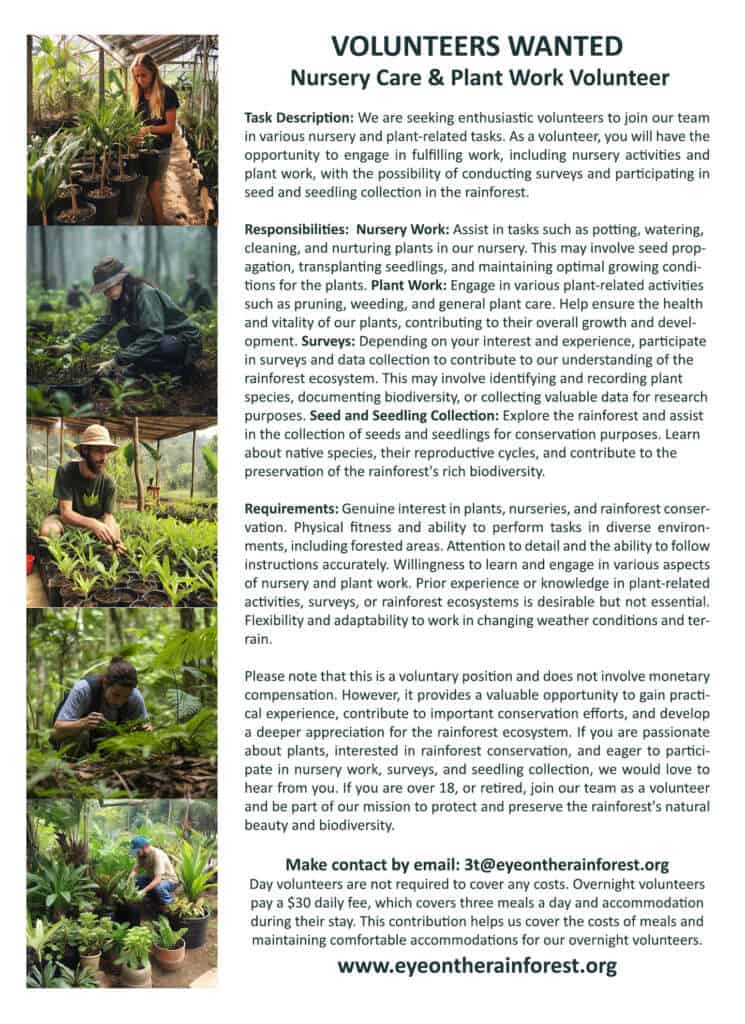
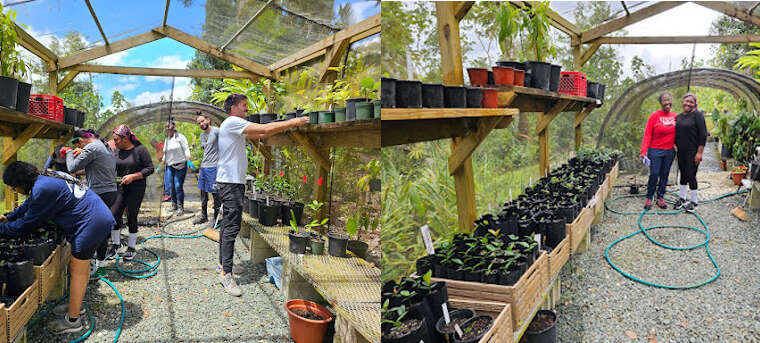




Thrity was invited by the directors of the Botanical Gardens Conservation International, and Naples Botanical Garden, to the Botanical Bridges Congress 2022, at The Leon Levy Native Plant Preserve, a 30 acre world-class, botanic garden in Governor’s Harbor Eleuthera Island, Bahamas. It is a showcase of native and endemic Bahamian plants and is the first and only national park on the island. Thrity’s presentation at the congress highlighted the history and forestry work at Las Casas, including the last two years of work with critically endangered endemic species. There were 50 participants from 26 Botanical Gardens and institutions, representing 11 countries and territories, a gathering to improve global collaboration.
Here is 3t’s photo album of the trip: https://photos.app.goo.gl/JGPBqnmxetVGTKECA
Huge thanks to Joachim Gratzfeld, BGCI Regional Programmes Director; Chad Washburn, Director, Naples Botanical Garden, Florida; Noelia Alvarez, BGCI Plant Conservation Project Manager, for arranging and sponsoring Thrity’s trip.
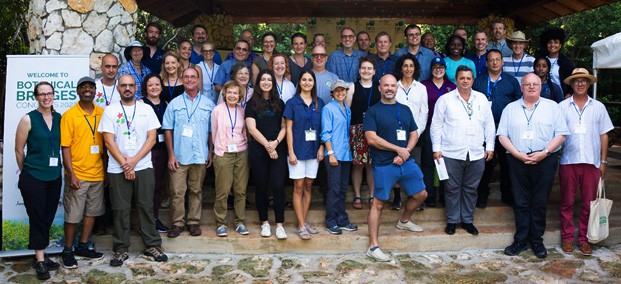
| Outcomes and Emerging Themes |
| |
| There were many important outcomes and emerging themes at the Congress including: Revision and acceptance of a draft of A Plant Conservation Strategy for the Caribbean Region. The strategy provides a unifying set of plant conservation actions linked to and in support of the Post-2020 Global Biodiversity Framework. The Strategy will be circulated among the Network in early 2023 for a final stakeholder consultation. A range of tools and resources are available through Botanic Gardens Conservation International to support and guide plant conservation efforts, including the International Plant Sentinel Network, Global Conservation Consortia, Global Tree Assessments, Plant Search, Threat Search, and the Global Tree Portal. There is a significant need to draw in more participation from Caribbean and Central American gardens and plant conservation organizations to build a stronger network. This will require improved communication, engagement, and promotion of the network. Botanic Gardens across the region are acting as education, training, and sustainability centers to build regional capacity to support plant conservation. Projects that focus on taxonomic groups can serve as successful models for collaboration and creating coordinated metacollections of high conservation value. Collaborations within the region and outside of the region will be necessary to build significant capacity for plant conservation. This includes collaborations between gardens and governments, businesses and entrepreneurships, schools and universities, and local communities. Conservation horticulture plays a vital role in supporting all plant conservation efforts. Climate change impacts play a strong role in the region. Work is needed to plan for disaster management and to prepare, mitigate and restore in the face of climate change. |
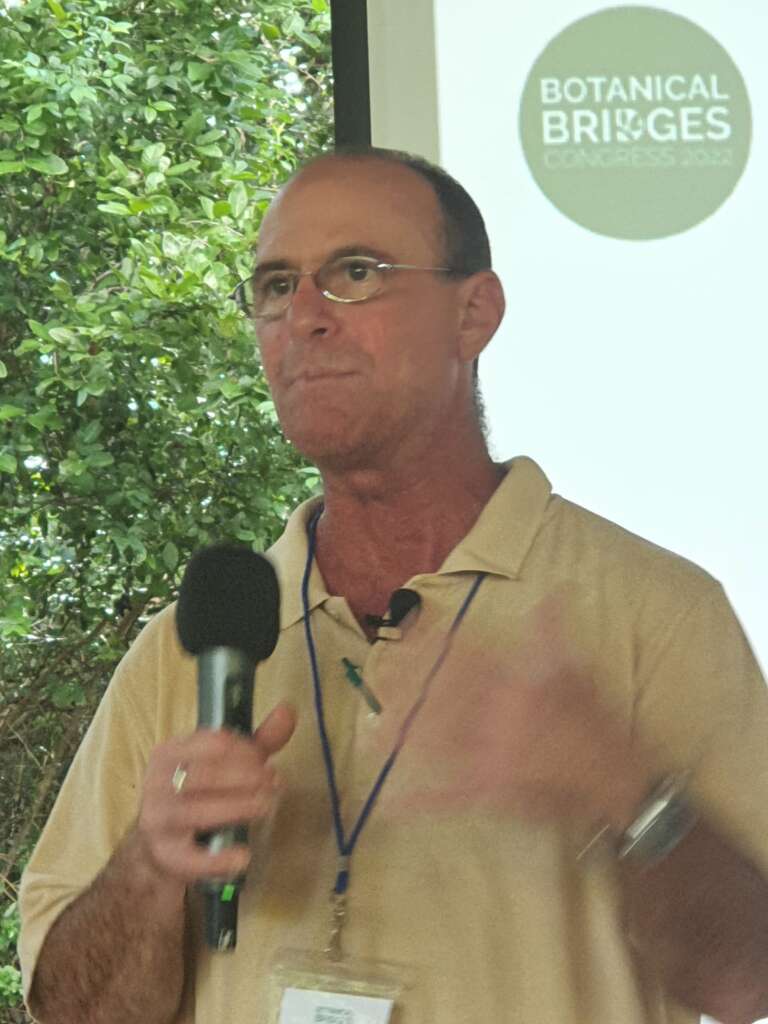
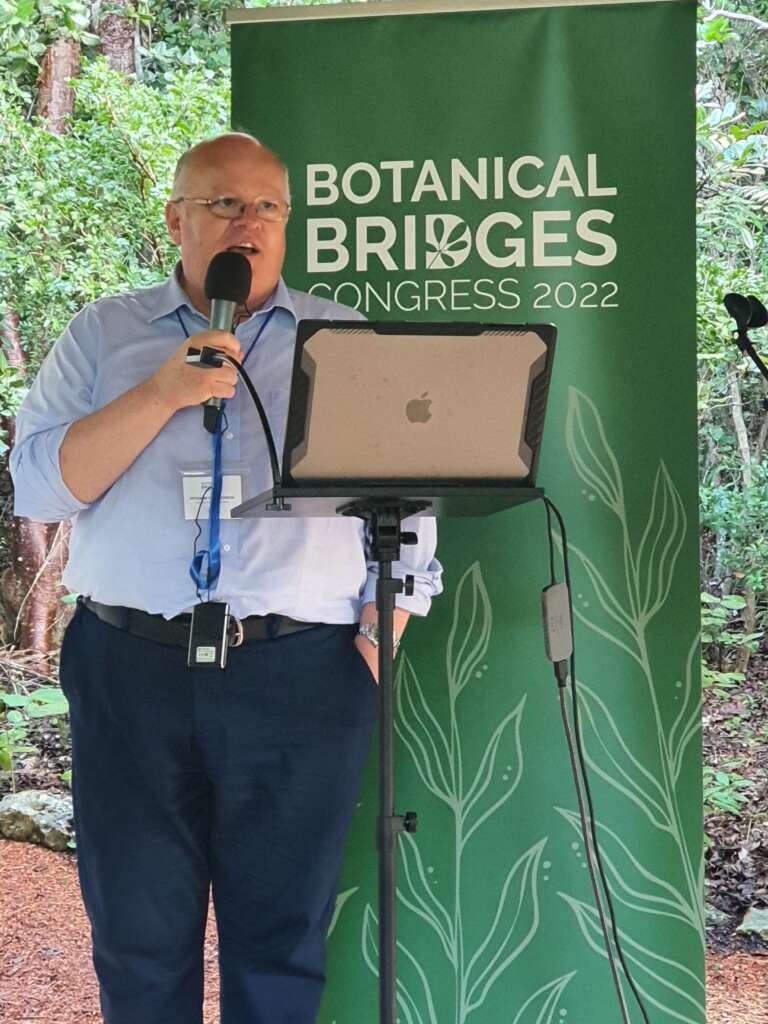
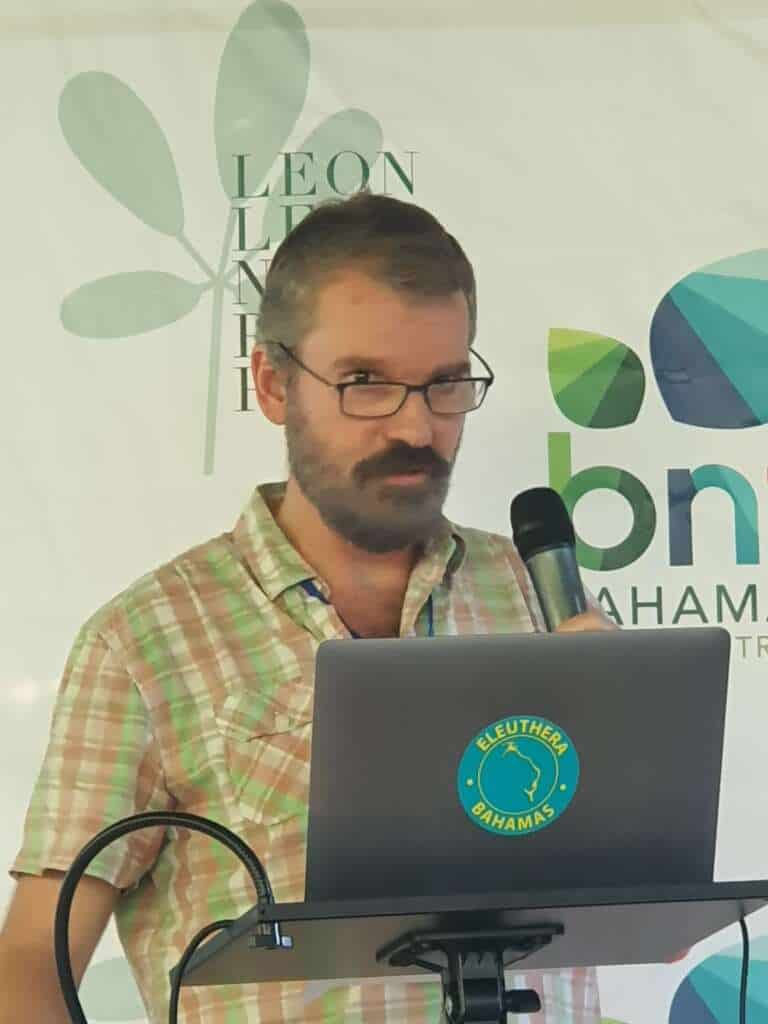

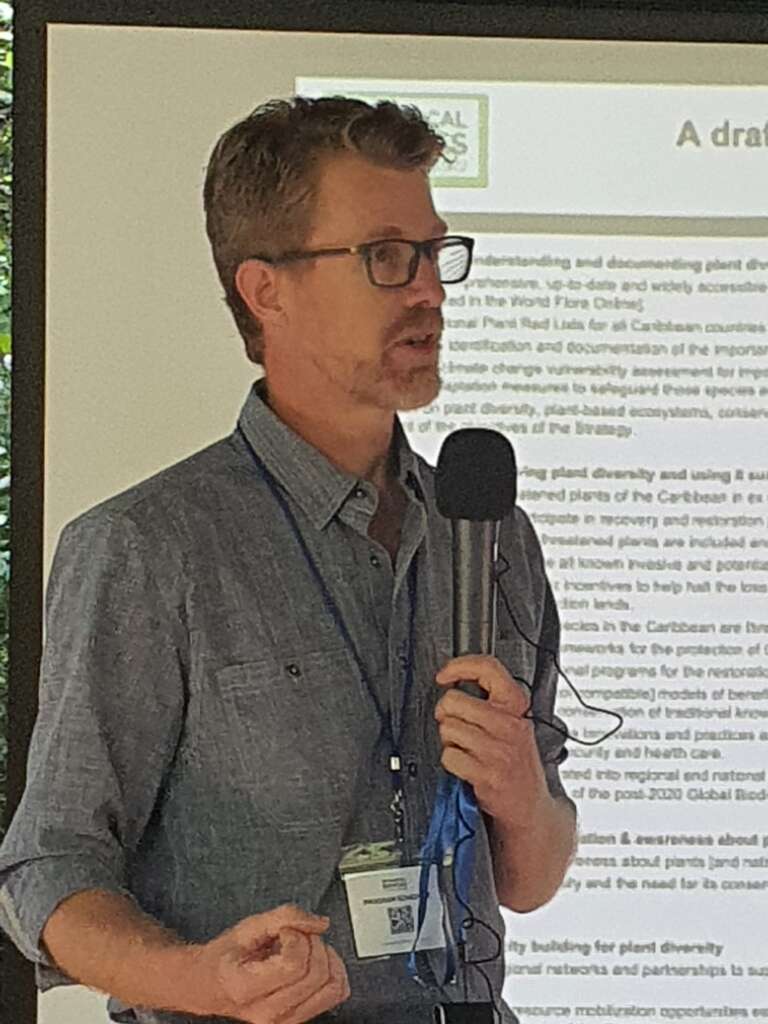
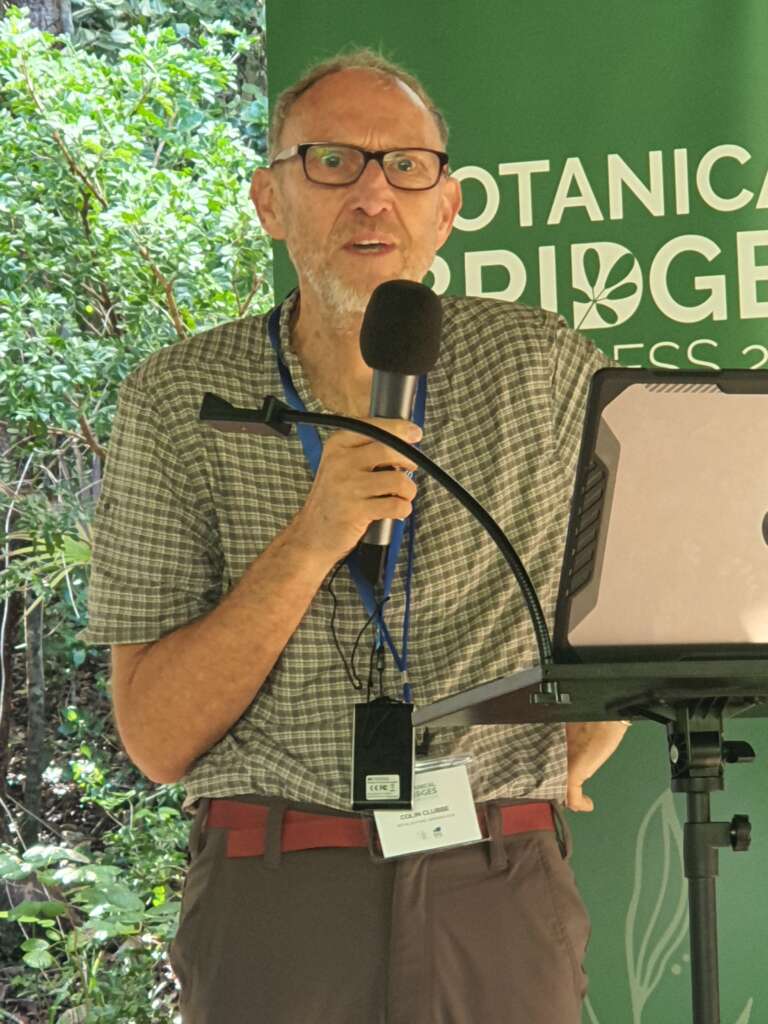
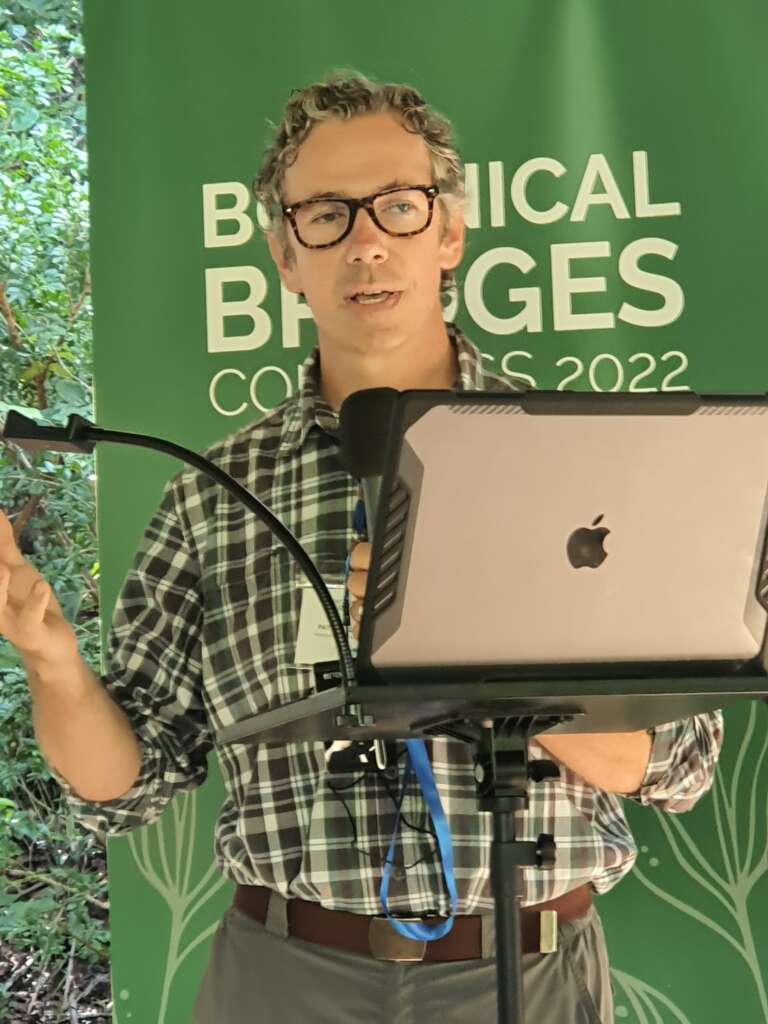
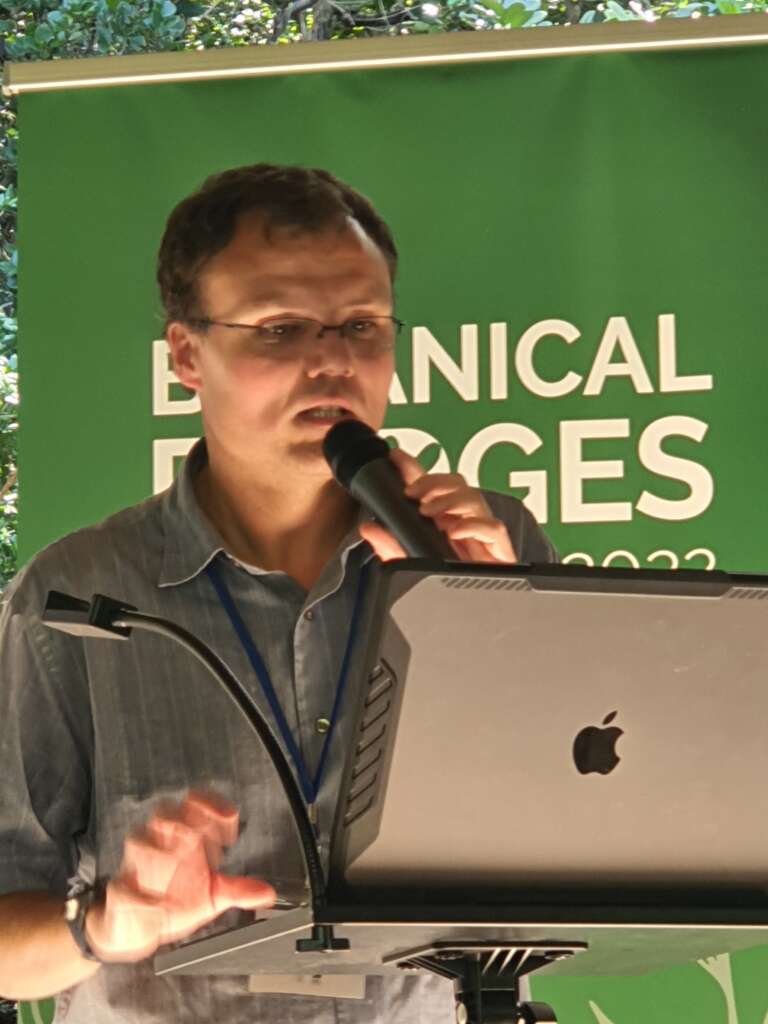
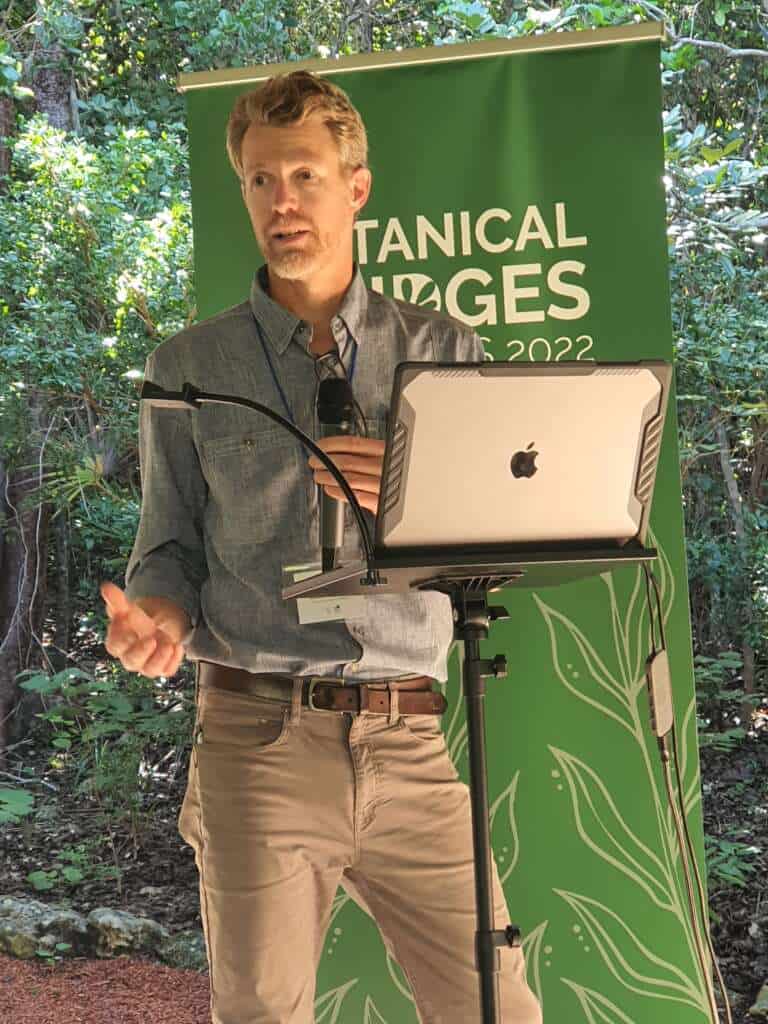
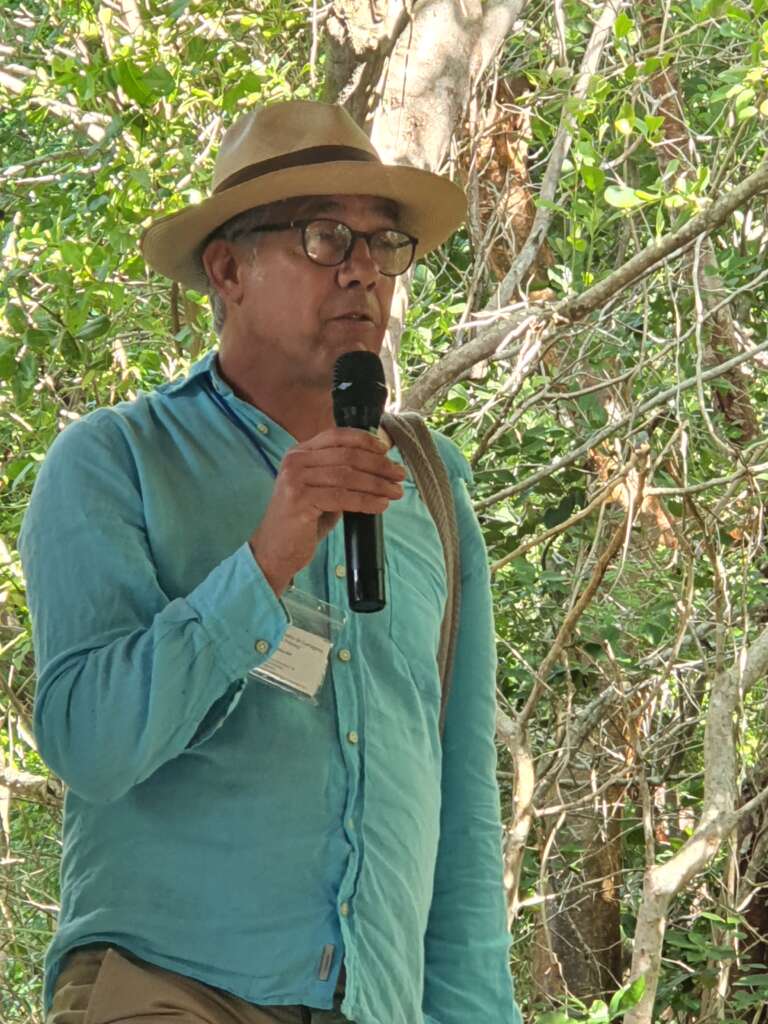
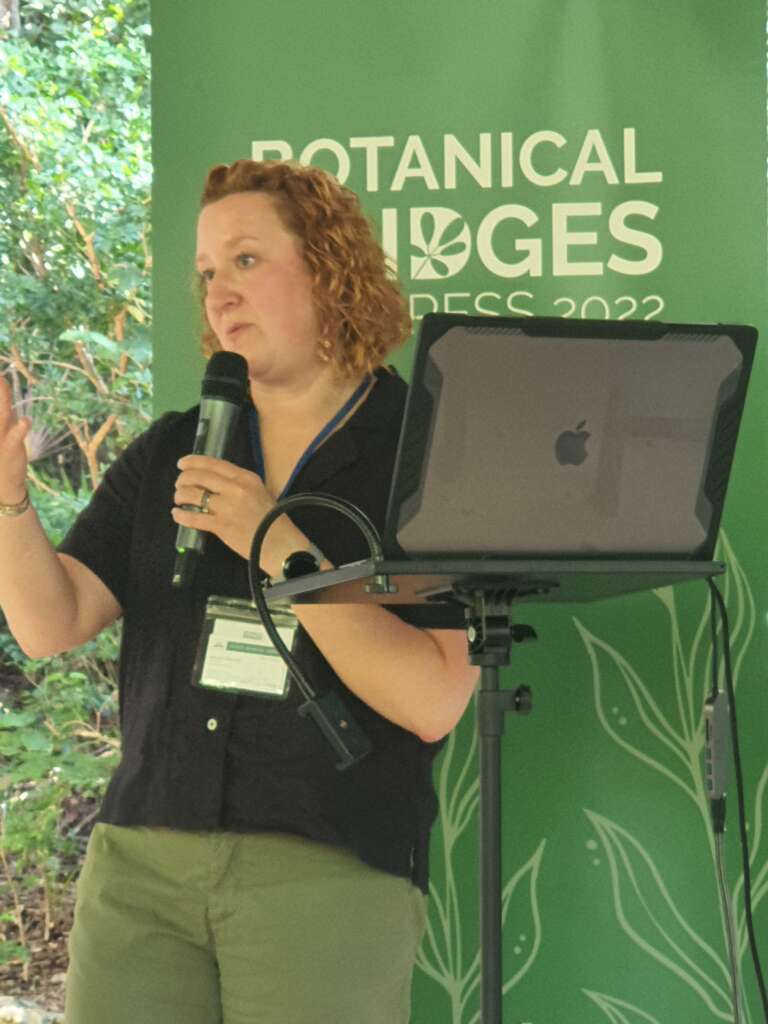
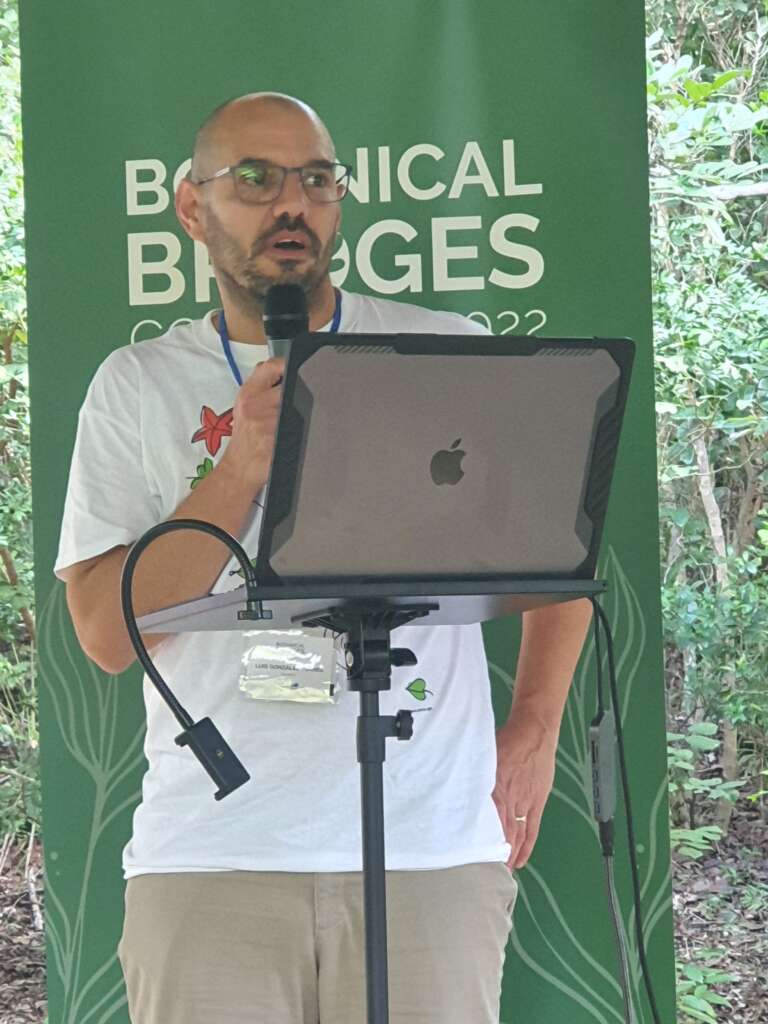
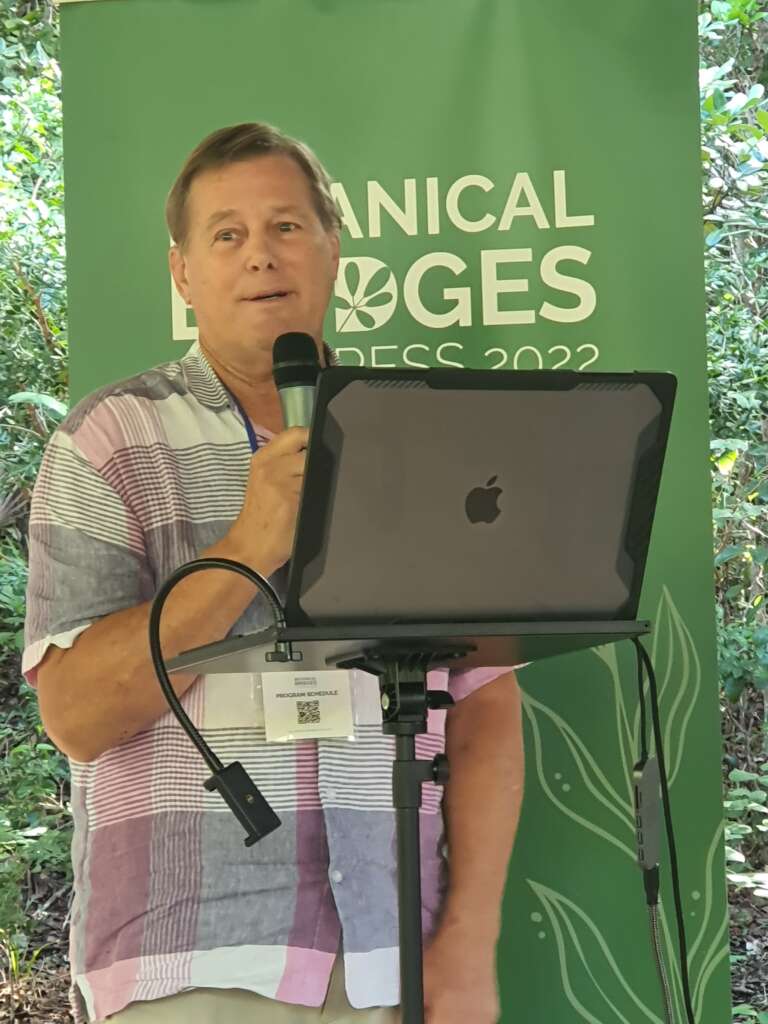



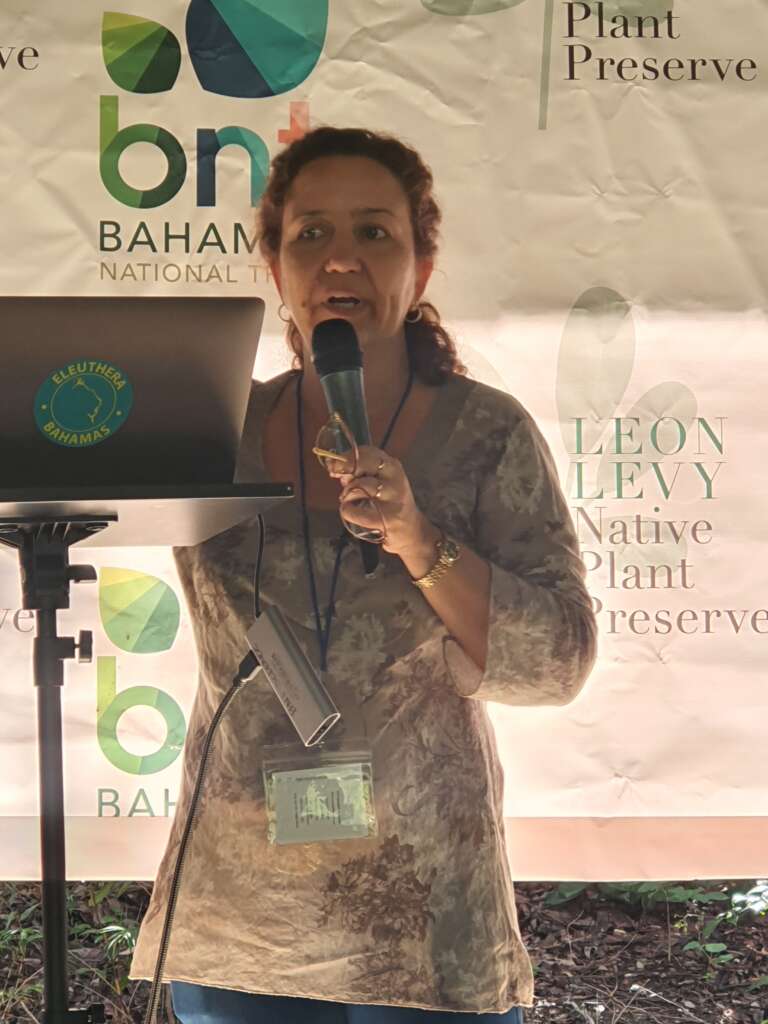

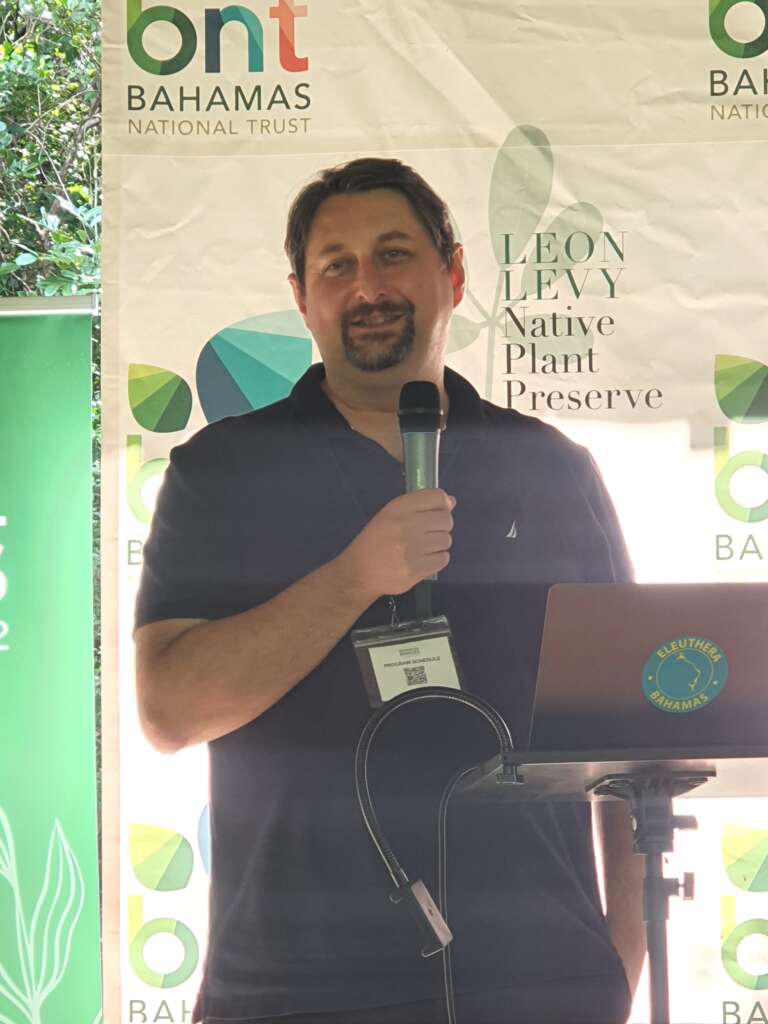
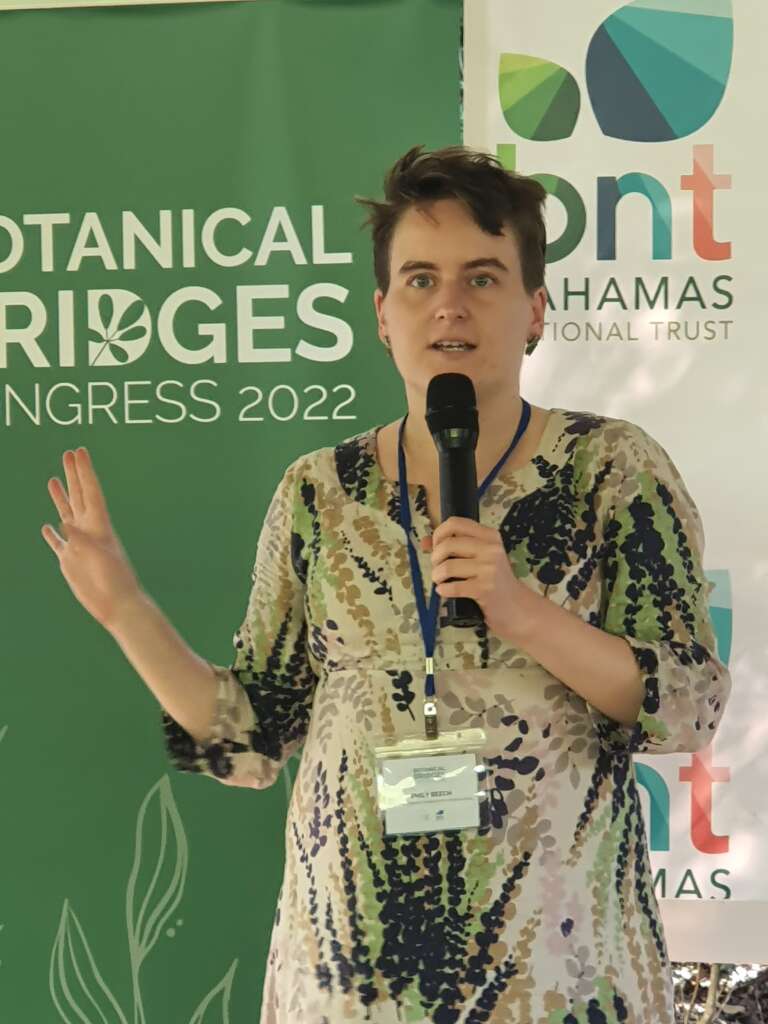

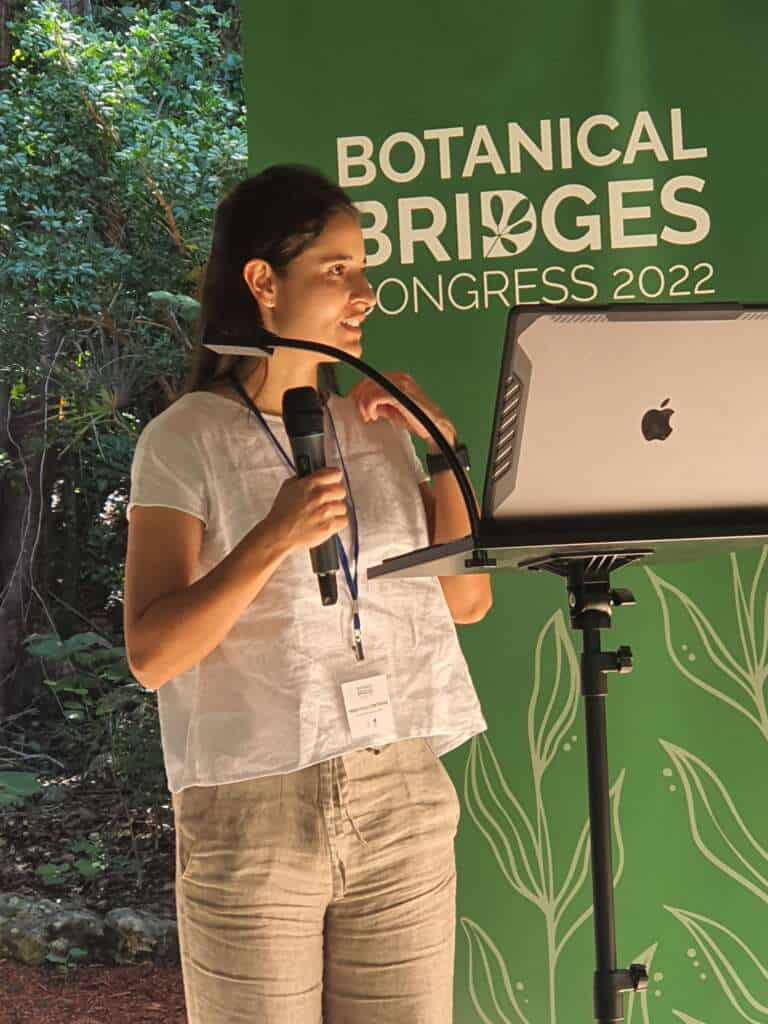
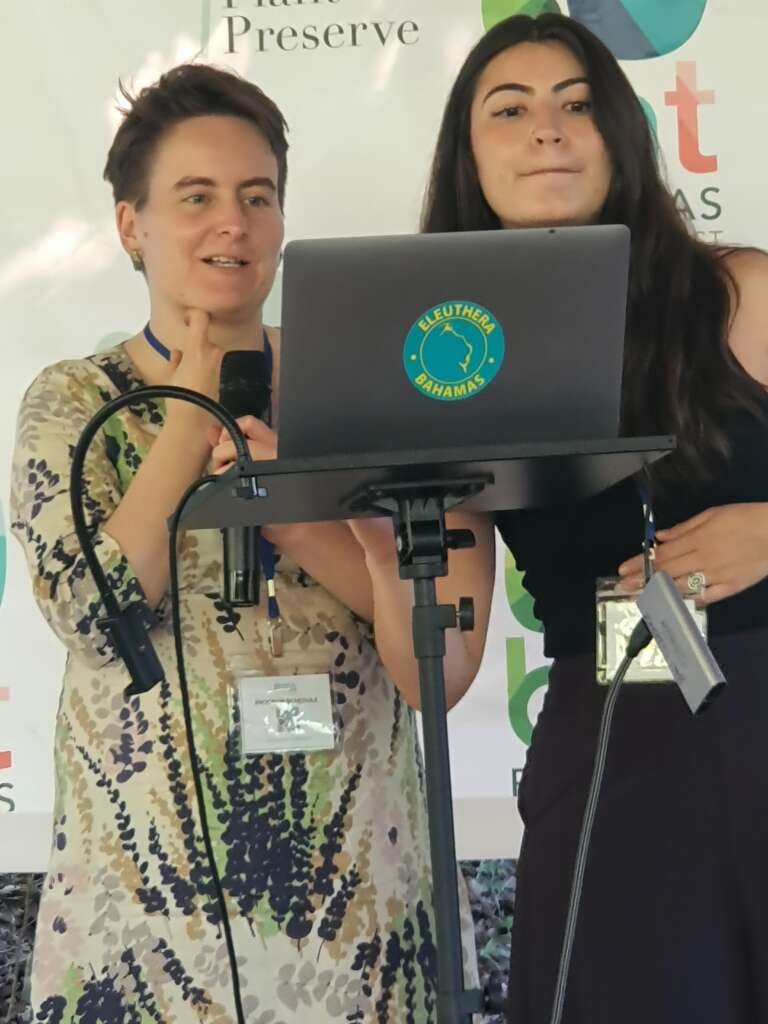
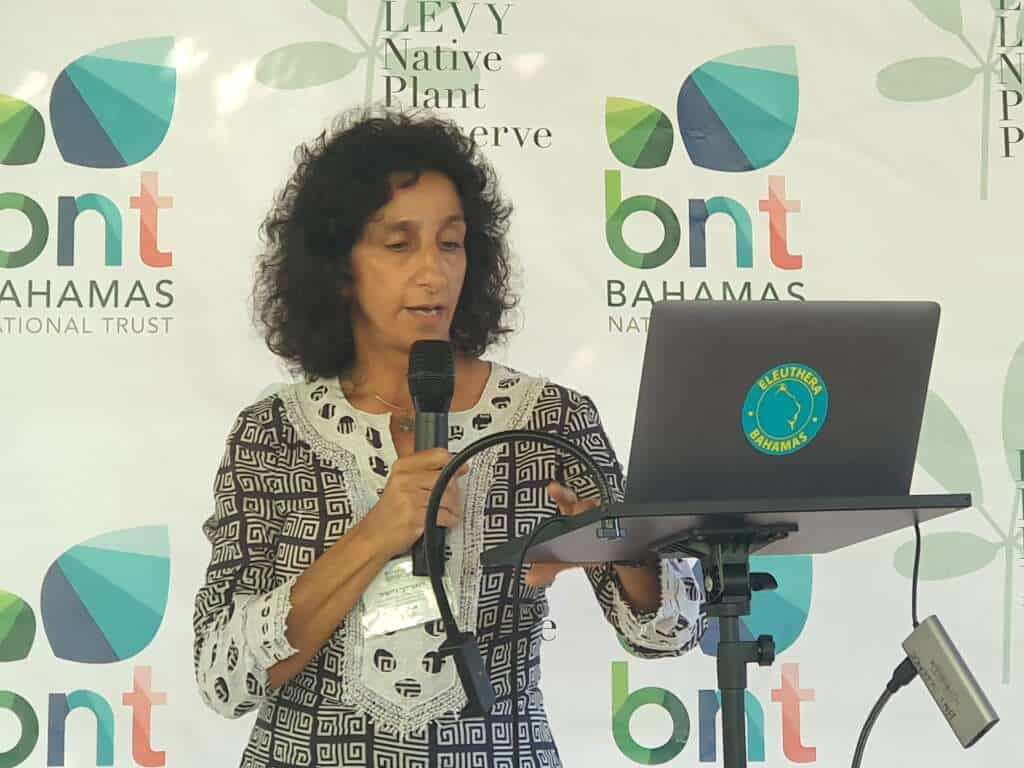
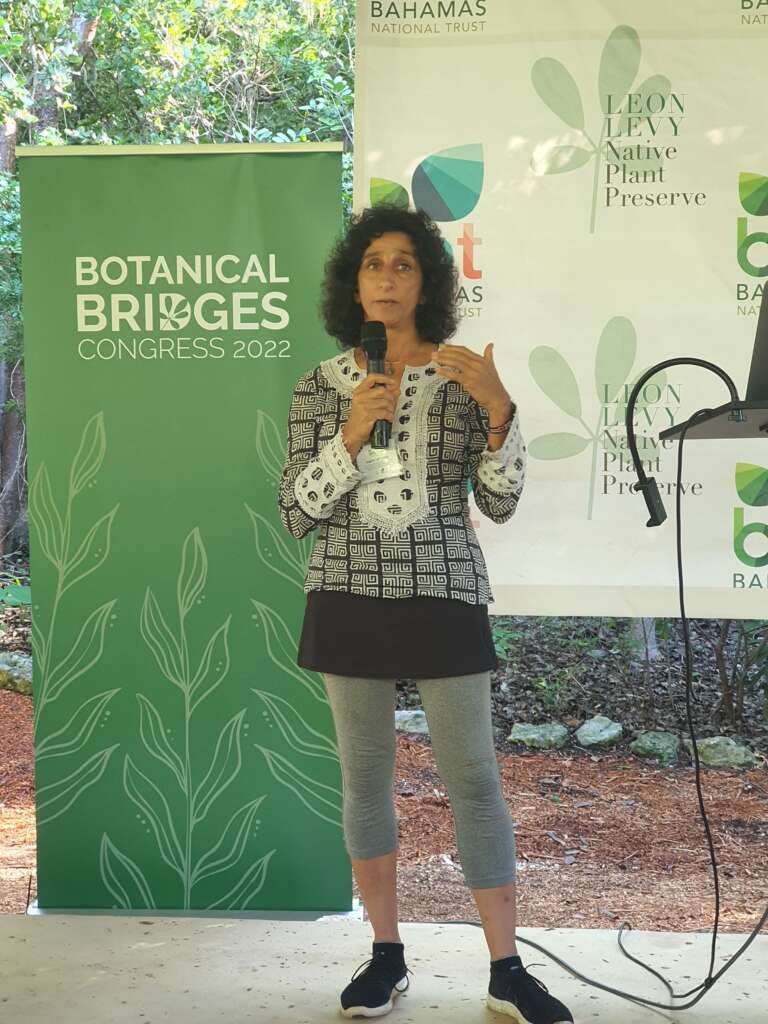
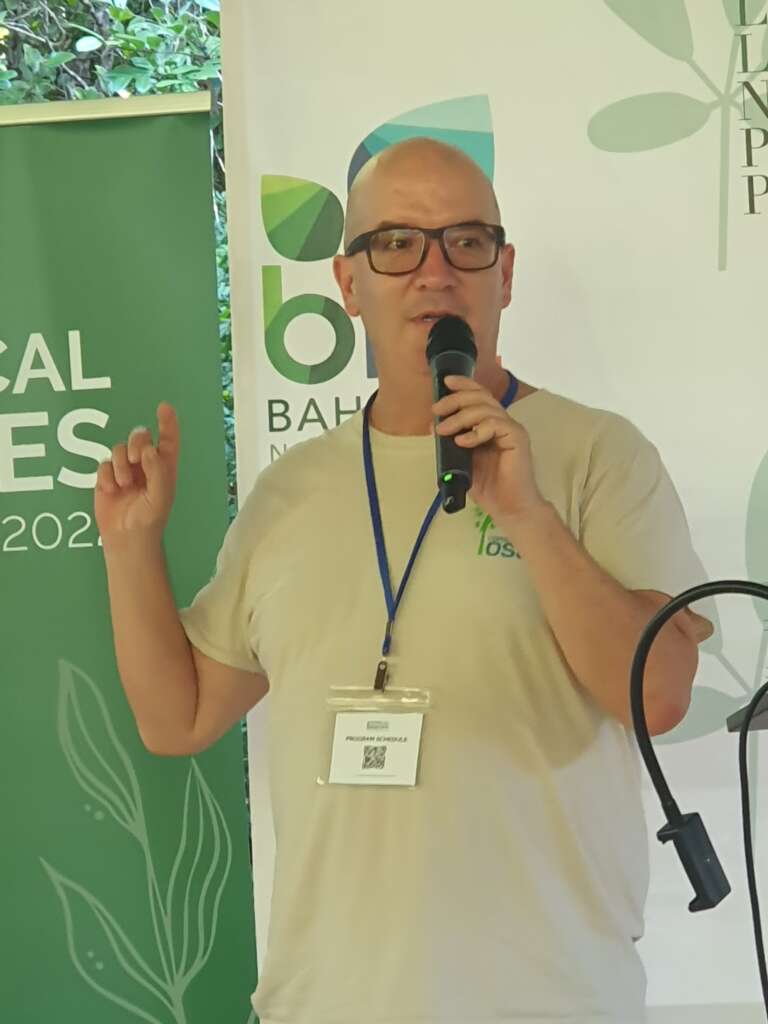
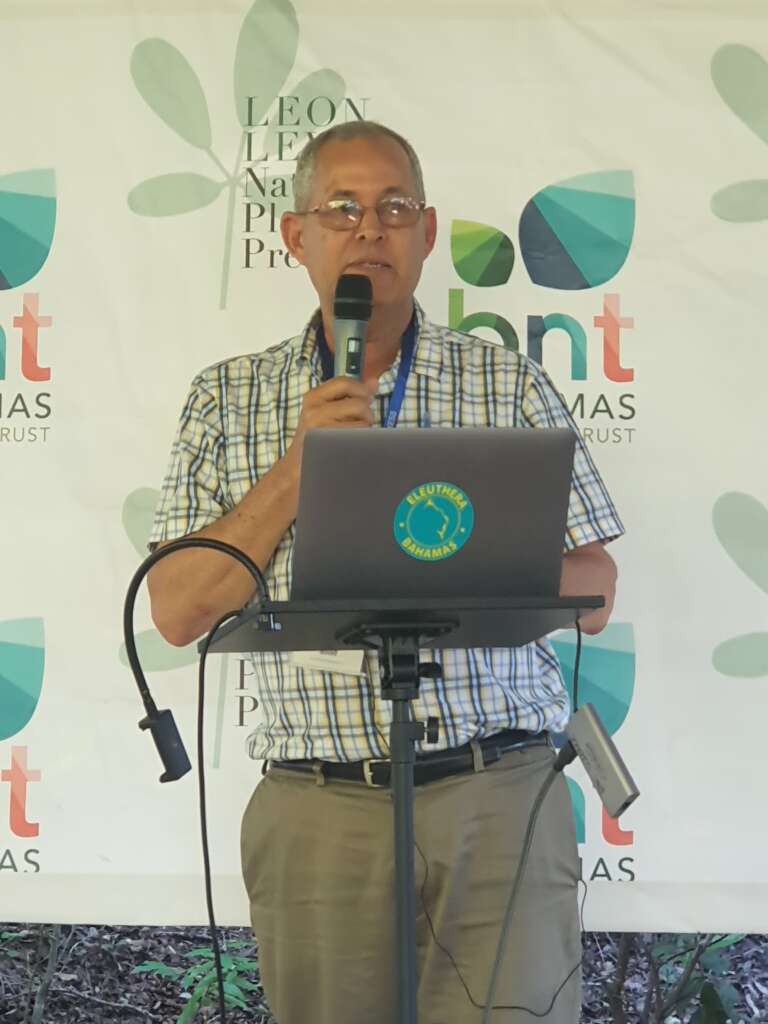
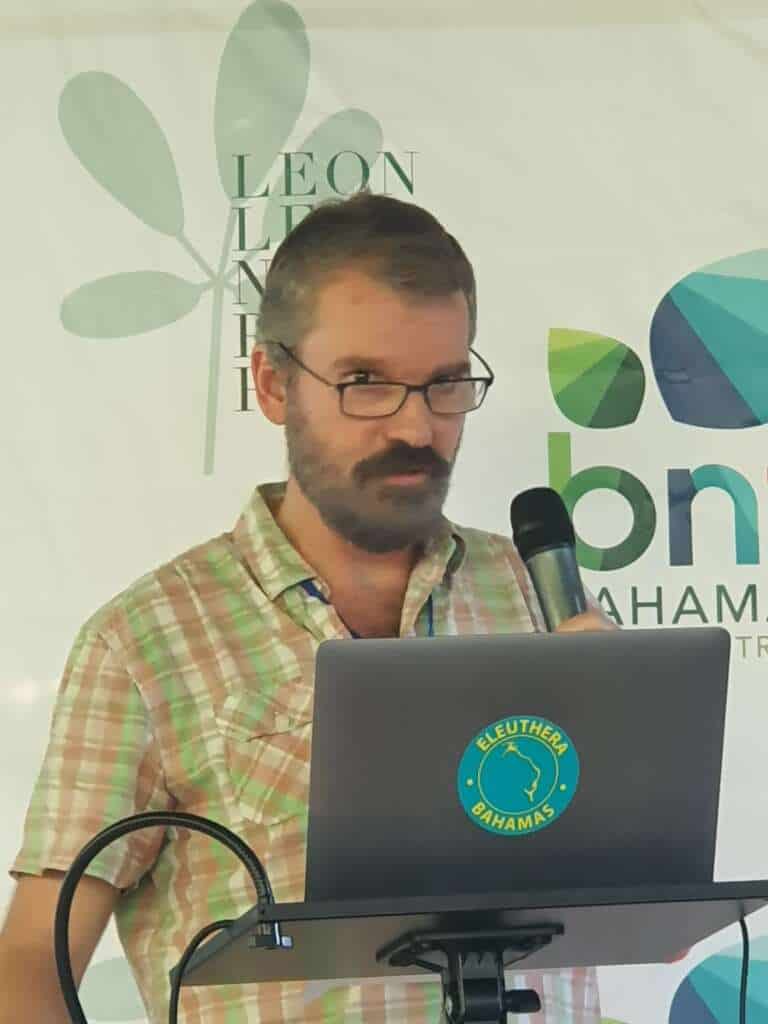
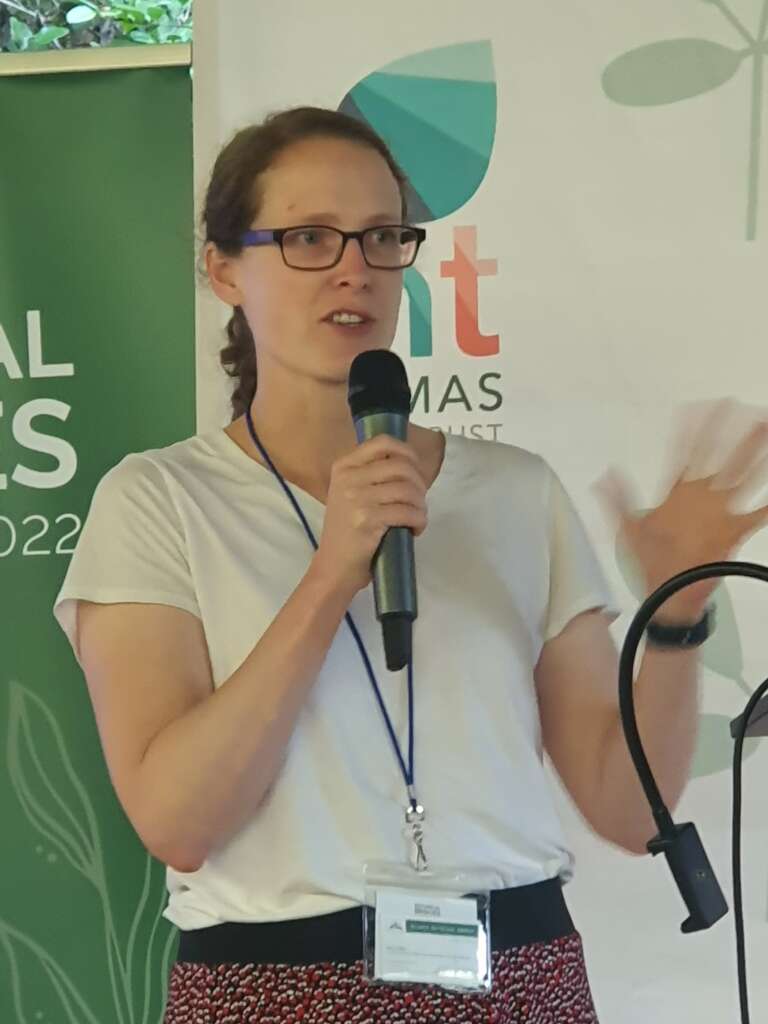
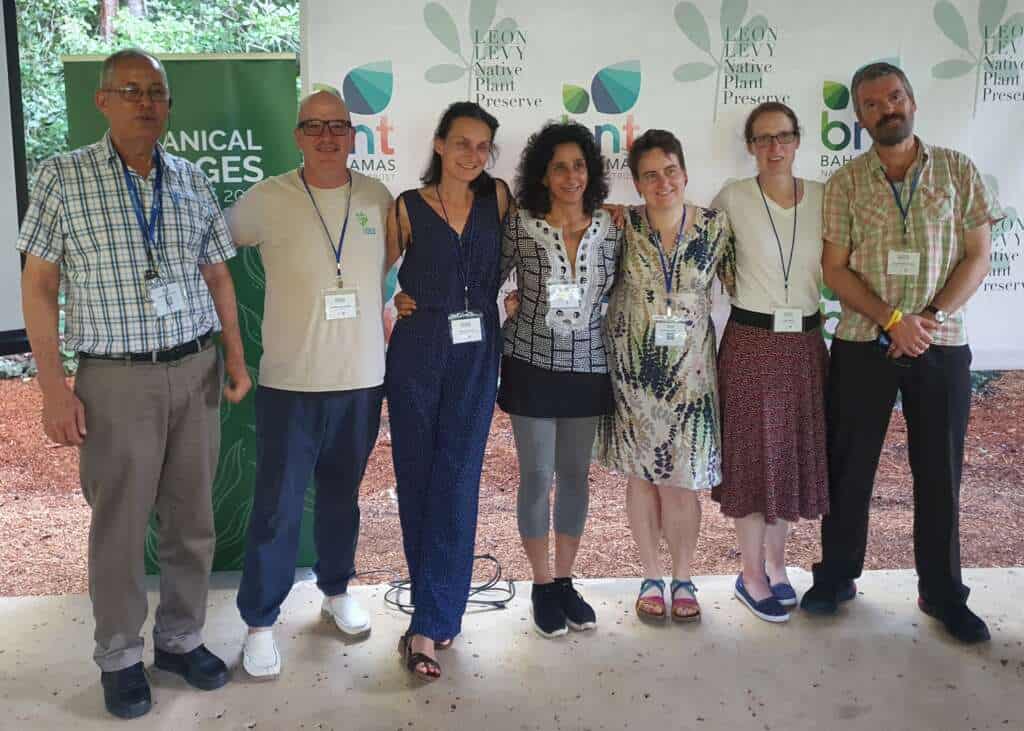
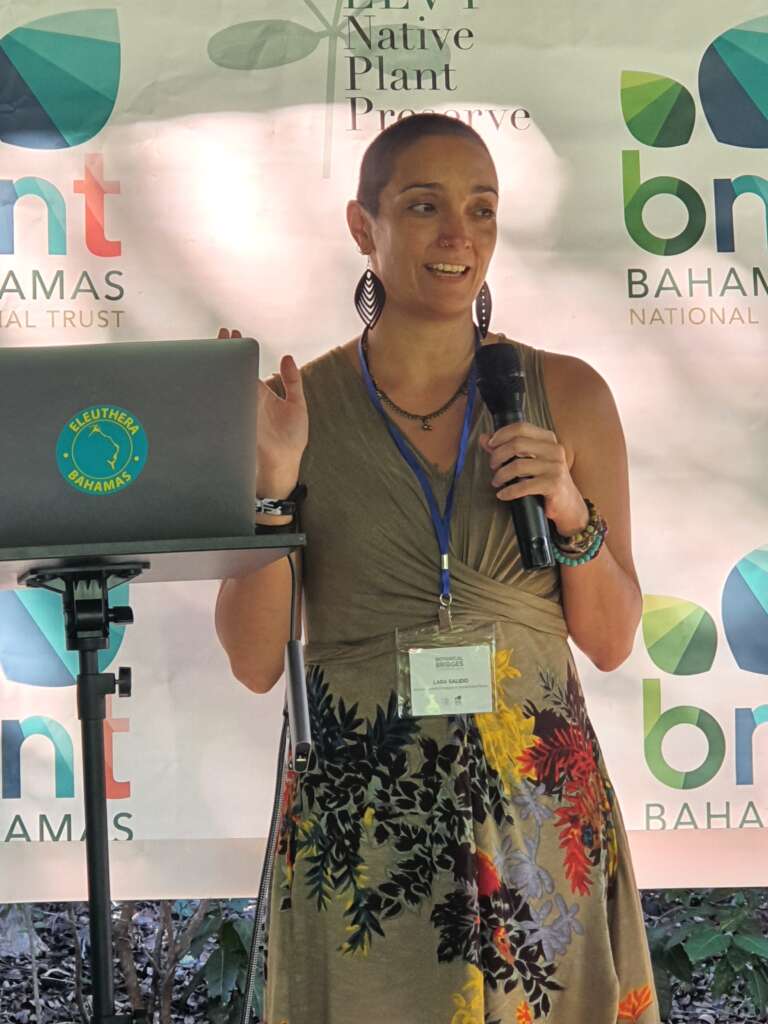
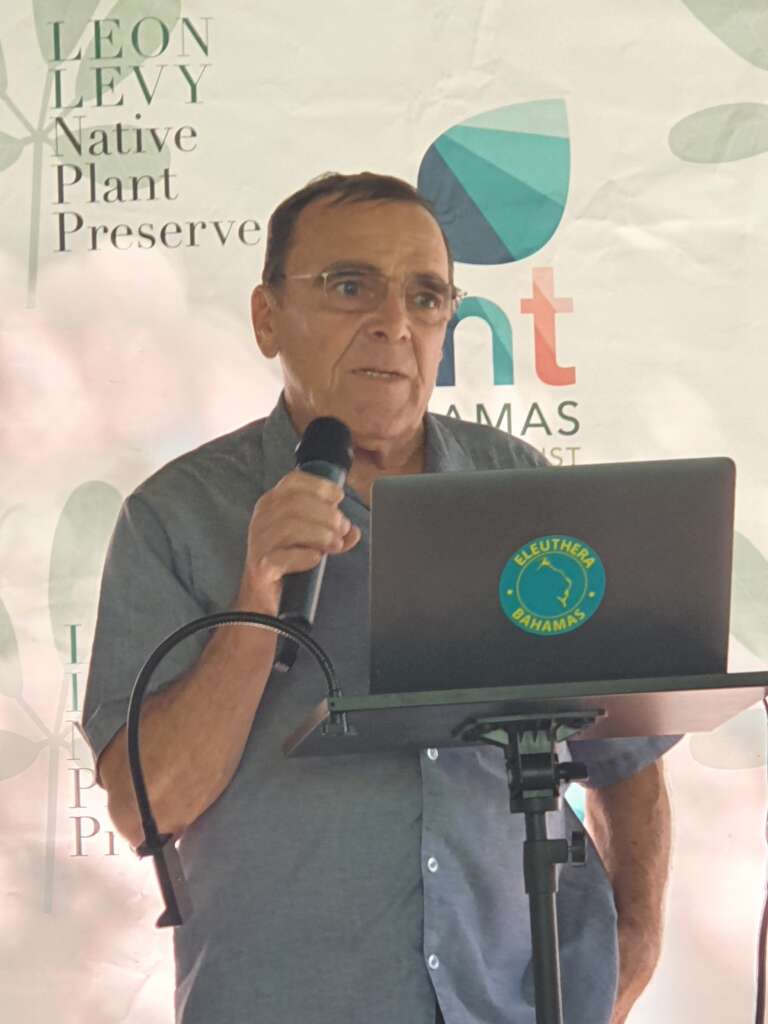
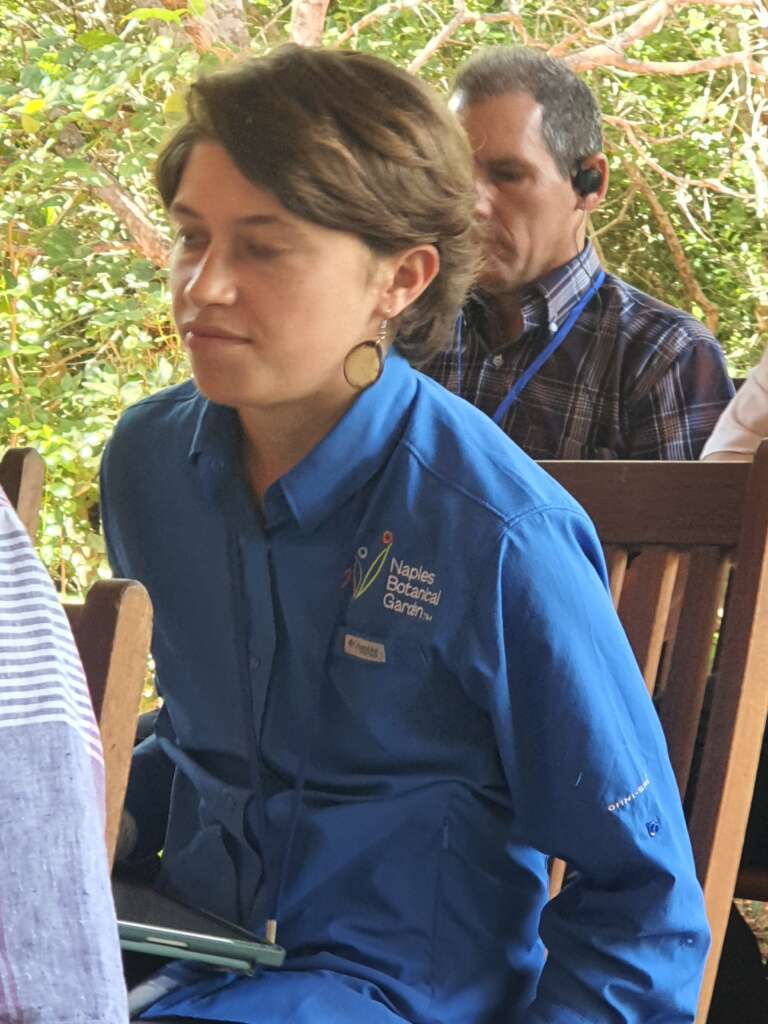
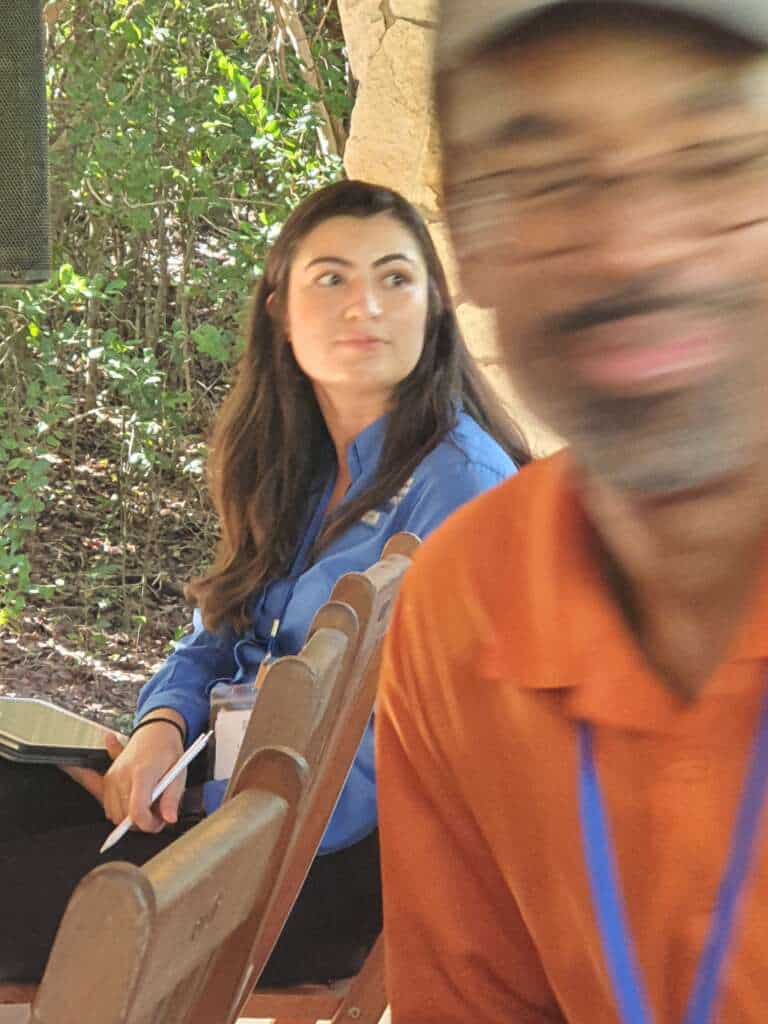
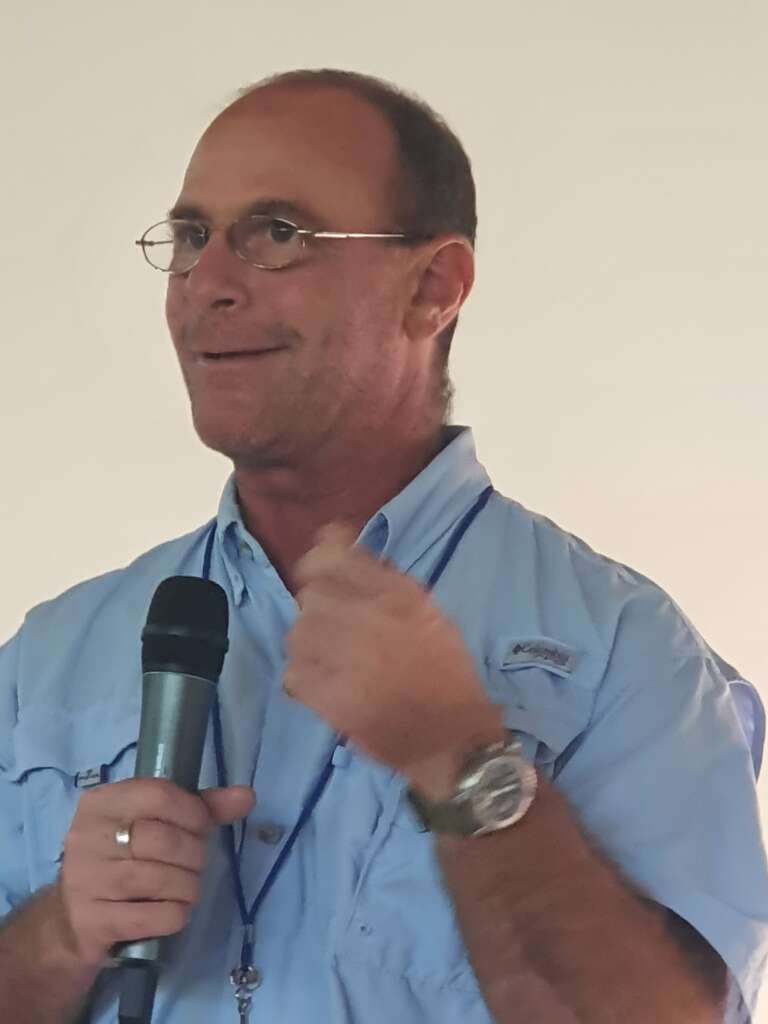


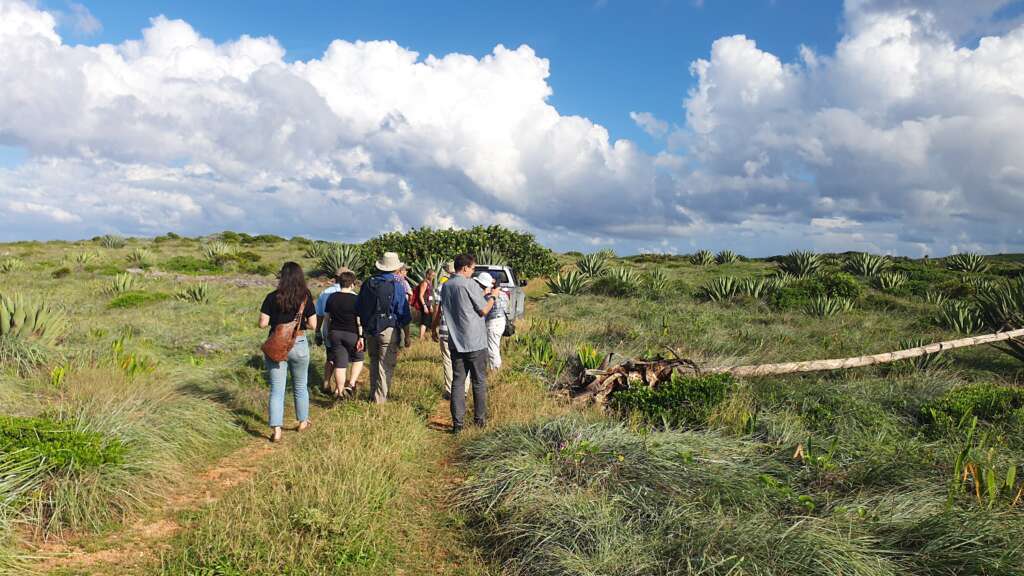

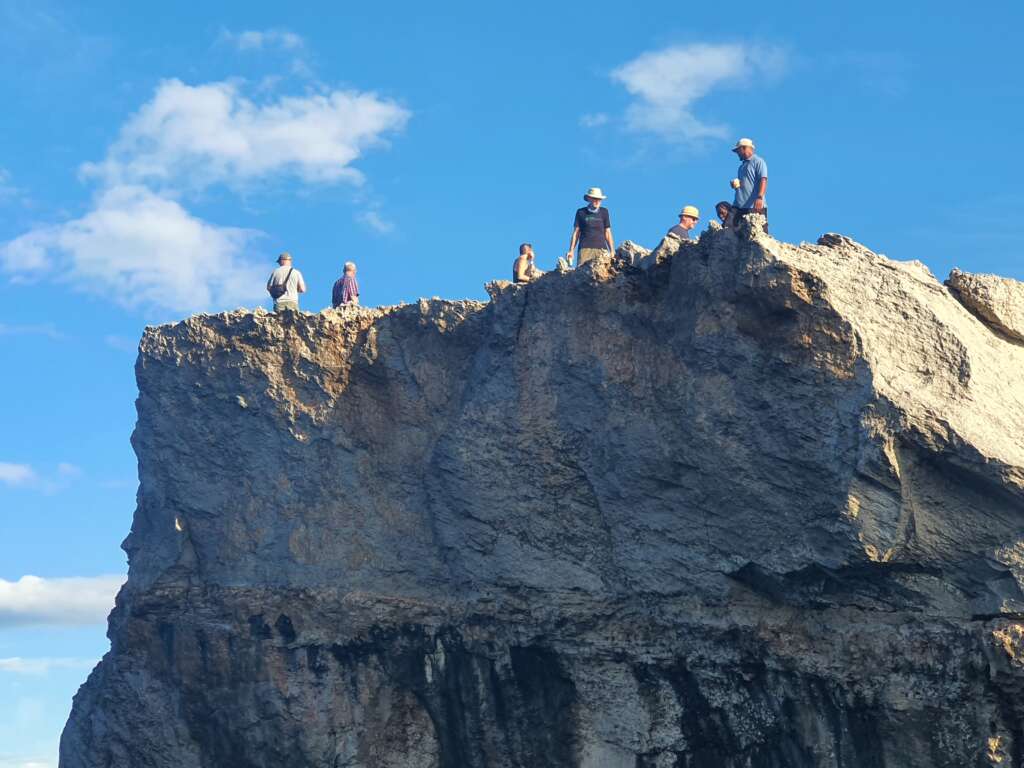
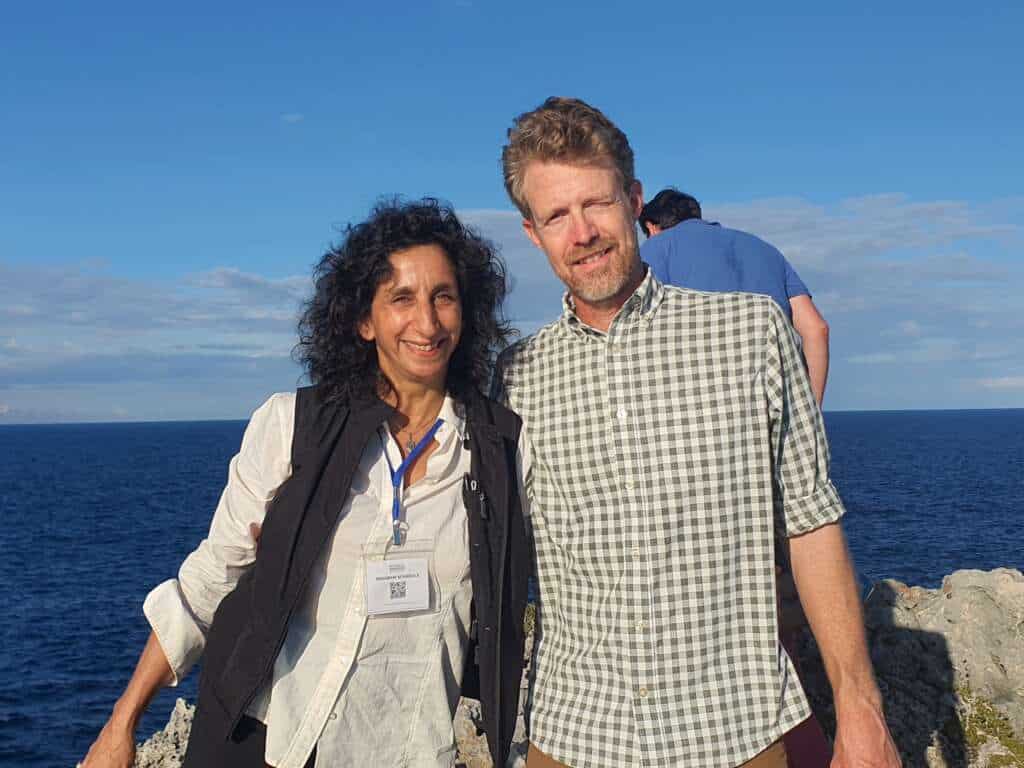

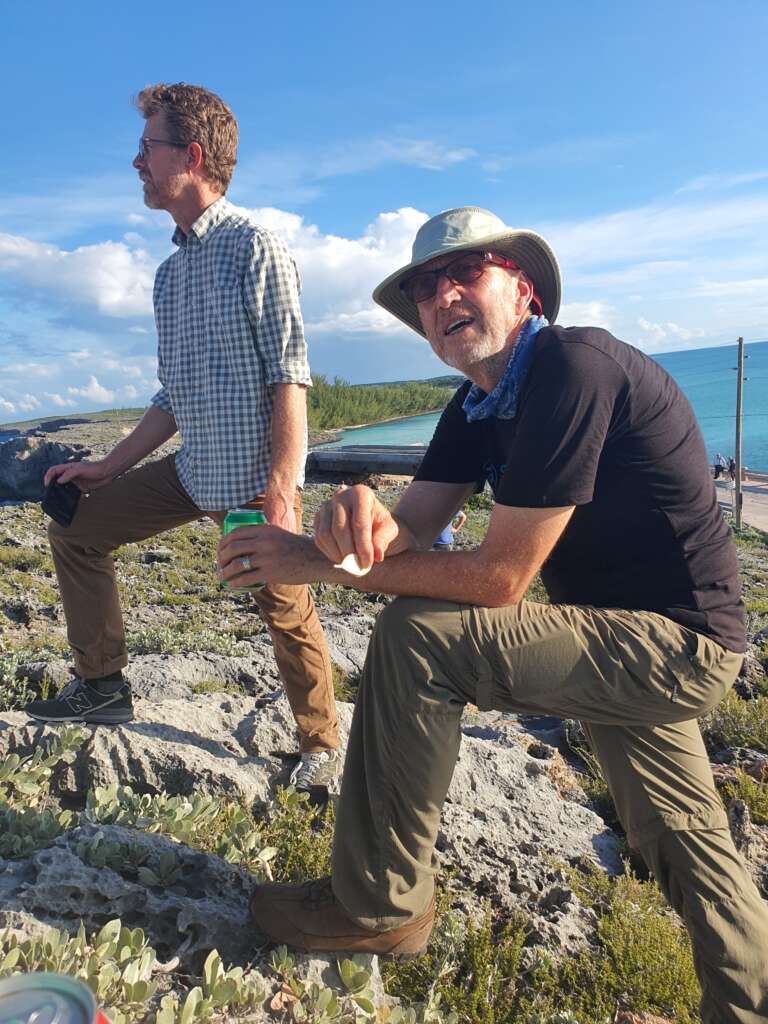
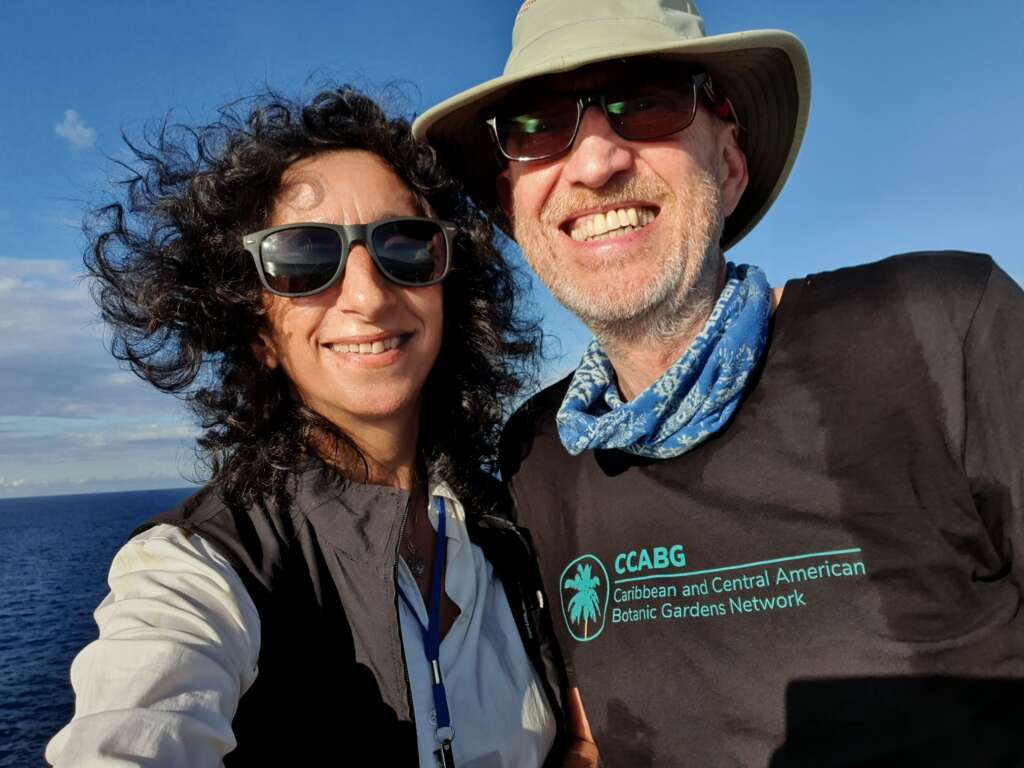
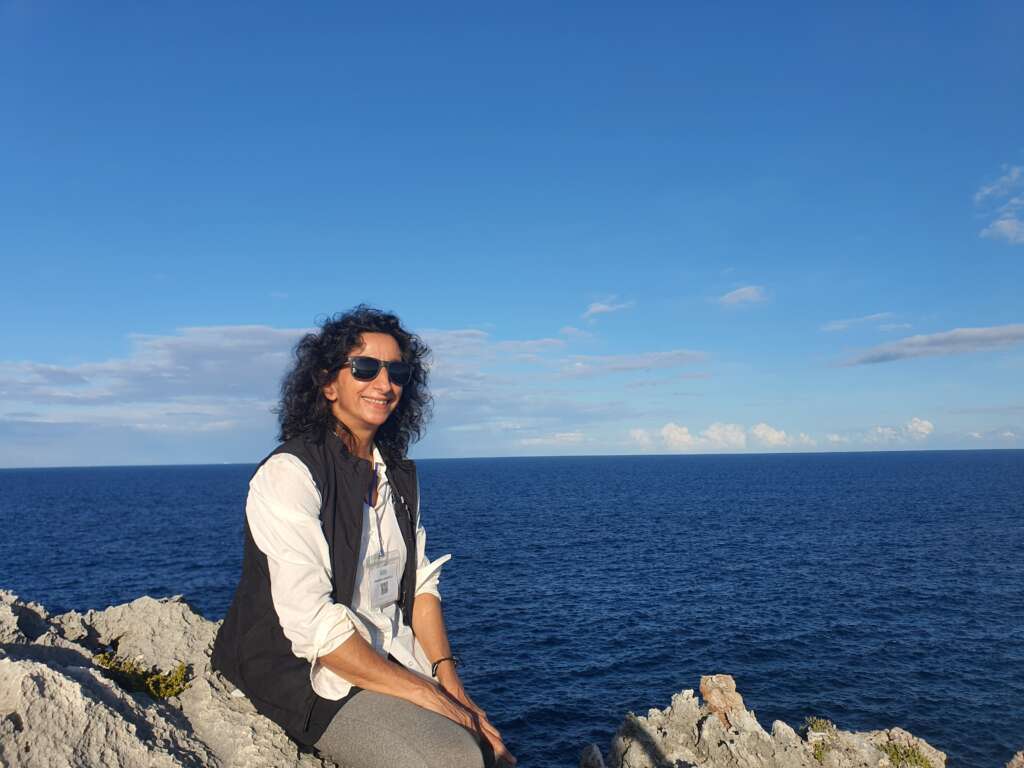
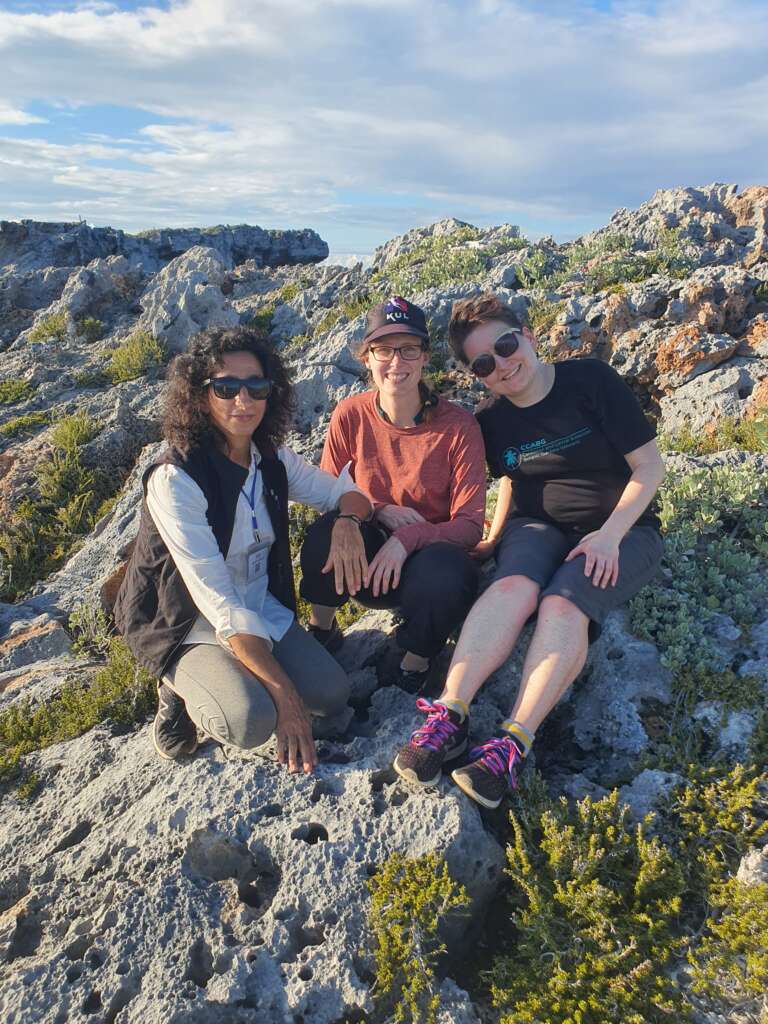
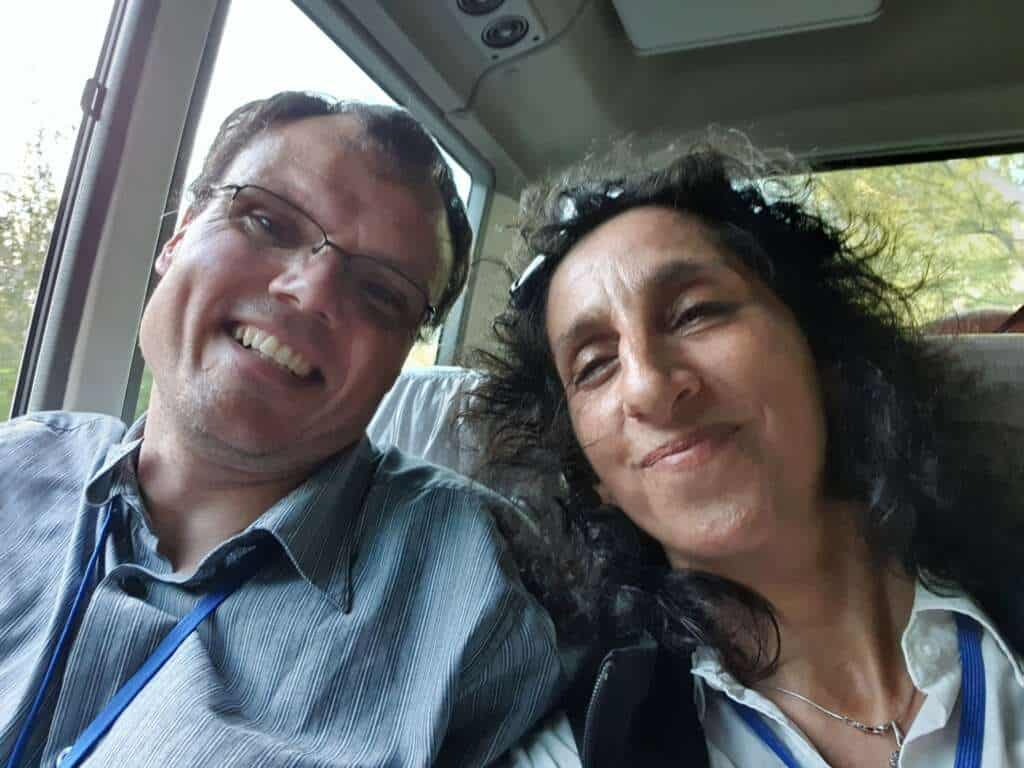
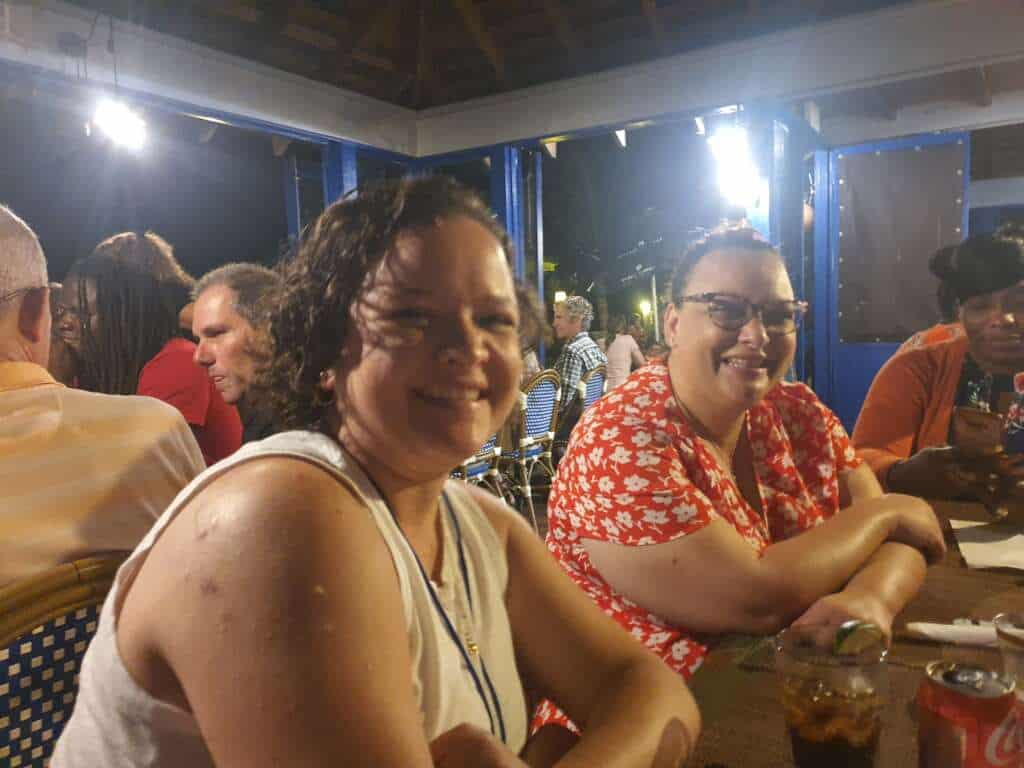
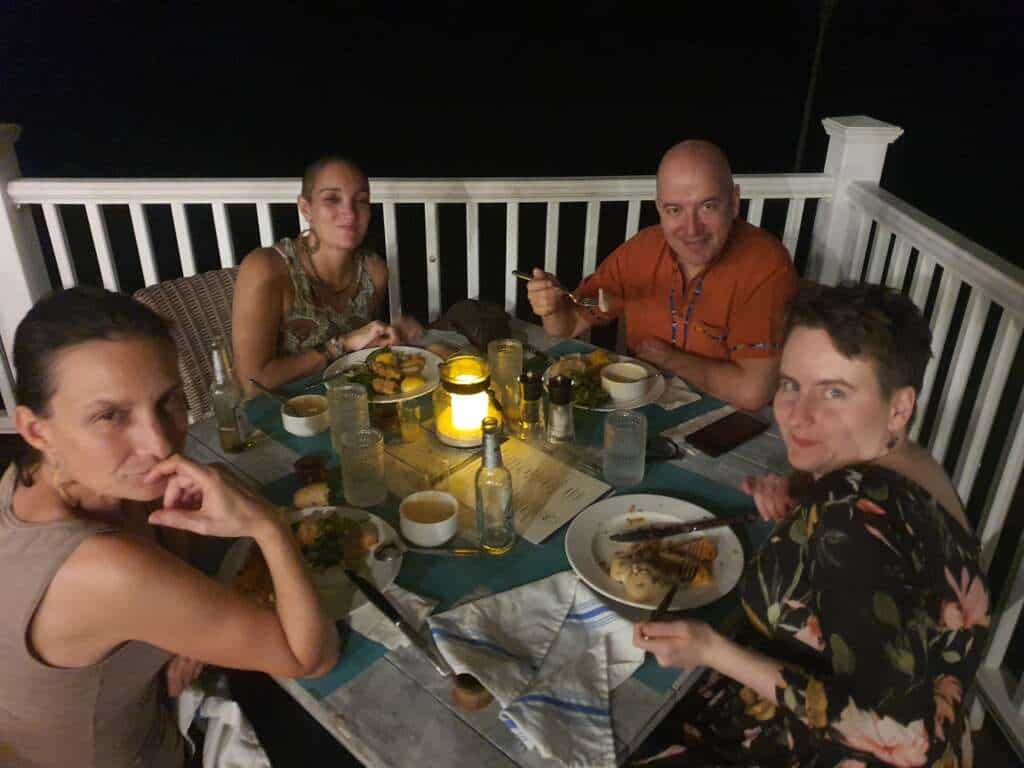




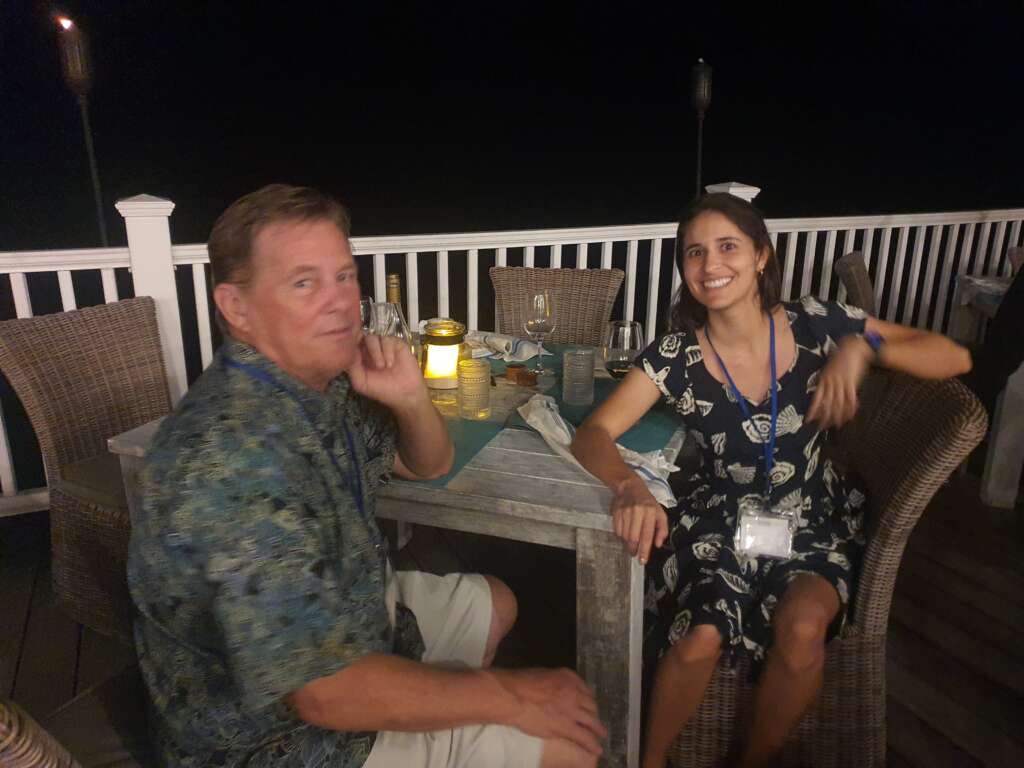
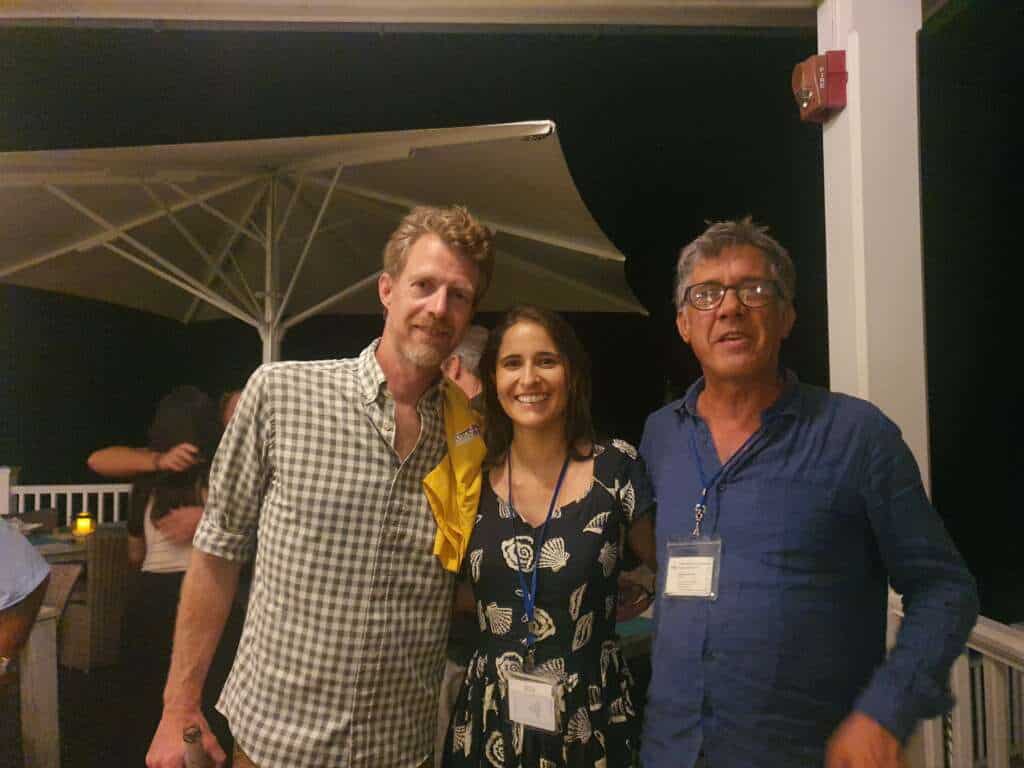
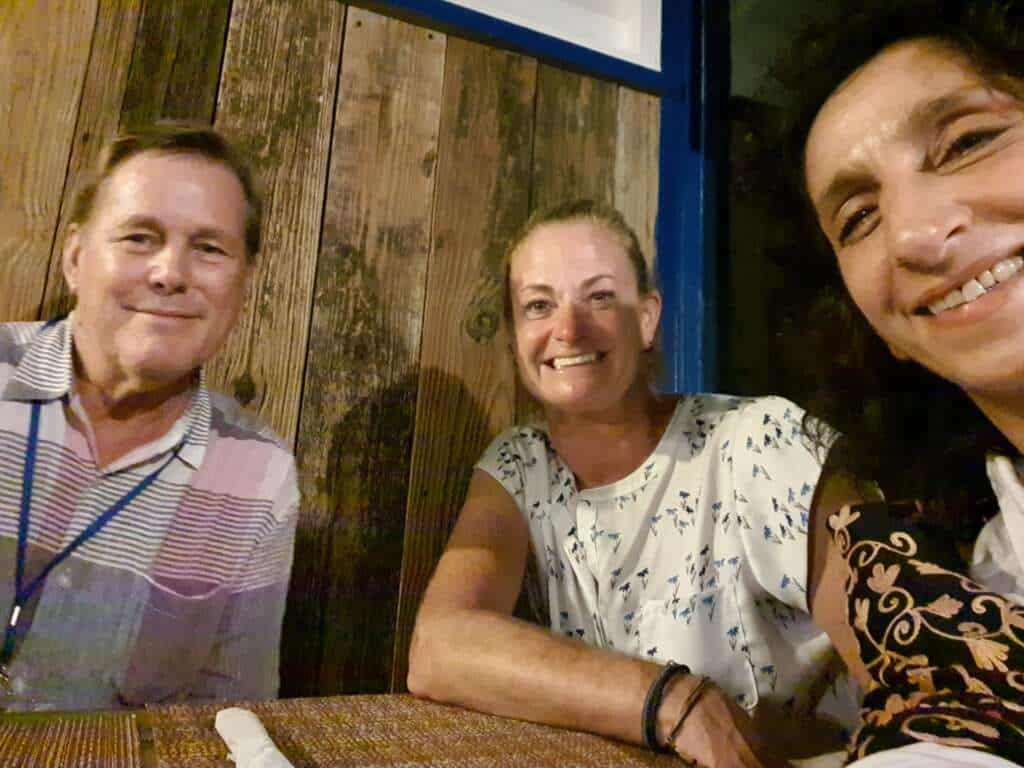
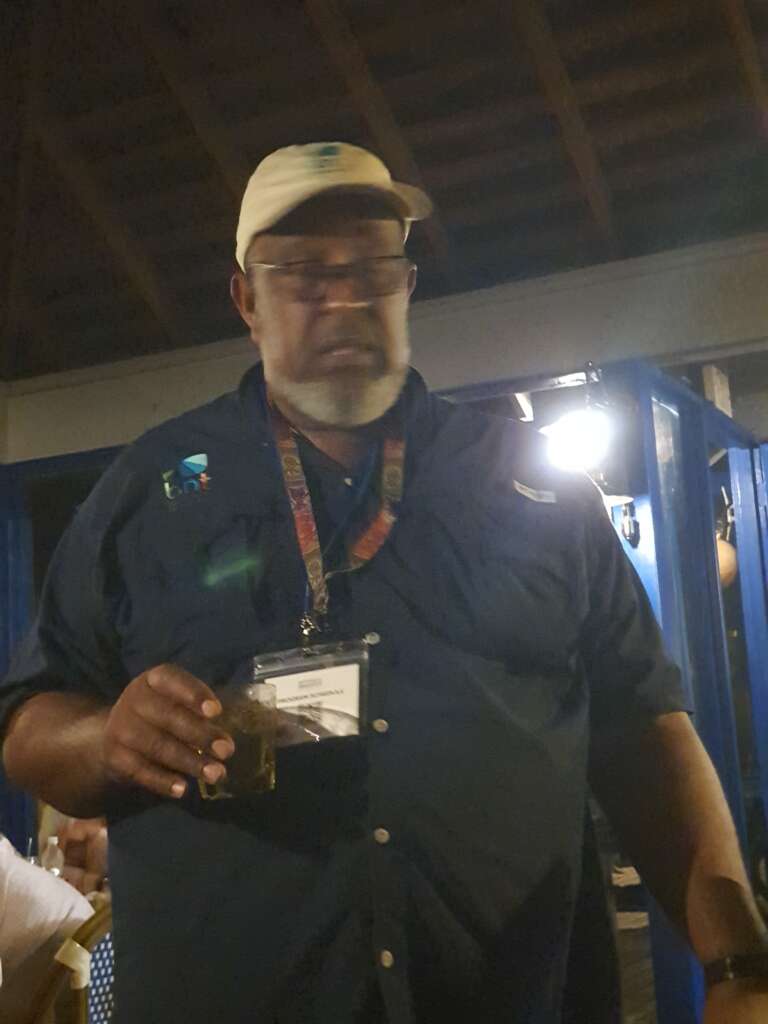

Botanic Gardens Conservation International (BGCI) promotes a holistic, integrated approach to the conservation and management of plant diversity. The ultimate aim of BGCI’s Tree Conservation Program is that no tree species become extinct. A coordinated, integrated approach to global tree conservation is needed, as the State of the World’s Trees, published in 2021 indicates that almost 30% of all tree species are threatened with extinction. BGCI’s Tree Conservation Program is integrating threatened tree conservation through four actions – prioritise, plan, act and monitor – to protect the world’s tree species from extinction with partners worldwide. In this session, we will showcase the varied approaches used to further the conservation of tree species.
PRIORITISE
Effective tree conservation requires information and tools to guide and prioritise action. The Global Tree Assessment is an initiative to assess the conservation status of all the world’s tree species, led by Botanic Gardens Conservation International and the IUCN Species Survival Commission Global Tree Specialist Group. Here we present the progress of the Global Tree Assessment towards our goal of an IUCN Red List assessment for every tree species with a focus on Central America and the Caribbean. However completing IUCN Red List assessments isn’t enough. Tree extinctions can only be avoided if the best possible information is available and then used to inform conservation decisions made by practitioners, policy makers and funders.
PLAN
Conservation action can be planned at species level but also at the national, regional and taxonomic group levels. All together, resources as made available by BGCI including the Global Tree Portal, Conservation Action Tracker, Recovery Plans, national conservation planning work and taxonomic group-level conservation planning, inform the selection of priority sites and species to develop integrated tree conservation initiatives and funding applications. Ground surveys are key to updating the information on baseline populations and understanding of threats and ecology for the species to enable the development of recovery plans.
ACT
The information available through the Global Tree Assessment is crucial to guide tree conservation action. While the challenges and scale of the problem in maintaining tree diversity are significant, the Global Trees Campaign initiative has worked to conserve over 400 threatened tree species in more than 50 countries. These projects carry out direct tree conservation action, collaborating closely with local partners worldwide. The full engagement and participation of local stakeholders is key to the success and lasting impact of all tree conservation initiatives. Technical challenges can be multiple and complex, building stakeholder capacity and partnerships facilitates the sharing of experiences, improves practices and increases success. We will showcase examples of tree conservation projects currently being implemented in the Central American and Caribbean region in countries such as the Dominican Republic, Guatemala, Haiti and Puerto Rico.
MONITOR
Project monitoring is the routine collection and analysis of information about project progress and whether expected results are being achieved. To track progress annually, BGCI has developed a thorough system of monitoring and evaluation where project activities are reviewed and amended as necessary, based on new findings or on unforeseen events, including natural and man-made hazards and changes.
An example of integrated conservation encompassing the Prioritise-Plan-Act-Monitor framework are the Global Conservation Consortia. The global botanic garden community is establishing a series of consortia of specialists with knowledge of genera that are technically challenging to conserve and manage. Eight such consortia have been established to date, including for cycads, and Magnolia. The Global Conservation Consortium for Magnolia (GCCM), led by Atlanta Botanical Garden, is a coordinated network of institutions and experts who work collaboratively to develop and implement a comprehensive conservation strategy to prevent extinction of the world’s Magnolia species.
Collaboration is needed to most effectively conserve the world’s tree species. Strengthening the networks already in place, sharing of information and experiences and developing new partnerships is key to protecting the region’s unique tree flora.
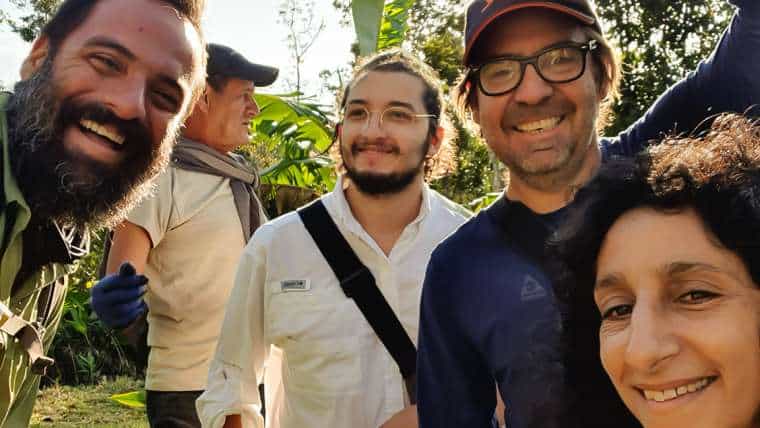
For Tropic Ventures Research & Education Foundation, 2021 began with Naples Botanical Garden in Florida securing a grant from the Association of Zoological Horticulture to fund the building of a new tree nursery at our project in Patillas, Puerto Rico, after the devastation of all our tree nurseries in Hurricane Maria in 2017. Following this, the 2021 Botanical Gardens Conservation International & Global Tree Campaign agreement and grant opportunity to survey for two threatened endemic species was a huge accomplishment; a proposal for the conservation of two Puerto Rican endemic trees, Garcinia portoricensis & Ravenia urbanii. Thrity Vakil, director of TVREF, immediately set about creating a diverse team comprised of plant and tree experts, and experts in the fields of ecology, biology, taxonomy, bryology, mycology, and zoology. (TVREF is also known as Eye on the Rainforest, which is the name of its website).
Take a short drone flight over Las Casas de la Selva, Sustainable Forestry & Rainforest Enrichment Project, established in 1983 in Patillas, Puerto Rico. August 2021.
Footage by Brent Foley, Production by Alfredo Lopez.
Earthday Botanical Survey 2021, at Las Casas de la Selva, Sustainable forestry & Rainforest Enrichment Project in Patillas, Puerto Rico. Filmwork: Raymesh Cintron, Narrator: 3t Vakil, Soundtrack: Andrés Rúa
“Re-examining Crises as Opportunities for Change: Sustainable Forestry, Log salvage, and Hardwood production after extreme social, ecological & technological disturbances in Puerto Rico.”
Since 2014, the Yale University Chapter of the International Society of Tropical Foresters (ISTF) has awarded an Innovation Prize at its annual conference to honor outstanding initiatives and ideas related to tropical forest use and conservation. Thrity was selected as one of three finalists to tell the story of Las Casas de la Selva, Puerto Rico Hardwoods, and the Institute of Ecotechnics. February 2021
Images and footage: 3t Vakil, Andrés Rúa, Tom Marvel, & Greg Byers.
Hurricane Maria made landfall in Puerto Rico as a Category 4 storm on the morning of 20th September 2017. Tropic Ventures Sustainable Forestry and Rainforest Enrichment Project established 35 years ago, lay directly in her path. This is 3t’s visual story of the impact of Hurricane Maria on the rainforest project in Patillas, on the land known as Las Casas de la Selva, southeast Puerto Rico.
Film and photos by 3t Vakil, and Andrés Rúa. Edited by Corinna MacNeice. Use headphones to appreciate the soundscape.

“Seas, rain forests, and saving coral reefs” Long Lost Friends talks with 3T Vakil
“Painting and saving forests in Puerto Rico” Long Lost Friends talks with 3T Vakil
“Saving Endangered Trees” Long Lost Friends talks with 3T Vakil
PRESS & PUBLICATIONS

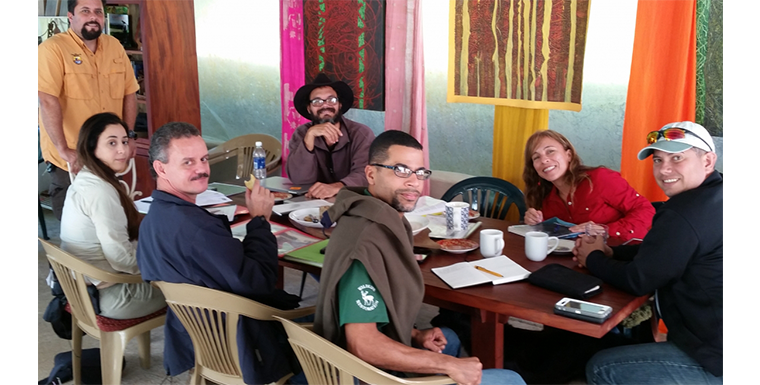
19th January 2017: First planning meeting at Las Casas de la Selva about our next collaborative habitat restoration project, working with endemic and endangered Eugenia haematocarpa (Myrtaceae) on private lands in the Sierra de Cayey, and the vicinity of the Carite Commonwealth Forest.
This project is a collaboration between US Fish and Wildlife Service and Puerto Rico Department of Natural Resources (PRDNER).
The tree we will be working with is Eugenia haematocarpa (uvillo), known only from the Caribbean National Forest in the Luquillo Mountains and on private property adjacent to the Carite Commonwealth Forest in the Sierra de Cayey. The Caribbean National Forest in the Luquillo Mountains has six distinct populations consisting of 119 individuals and the Carite population consists of 15 individuals.
Images by 3t Vakil January 2017

Earthwatch Team 2015 with Stacey third from left. Thank you for a lovely reminder of our adventures together!
The Quest To Solve Wonders In The Rainforests Of Puerto Rico-Earthwatch Expedition
A video made by one of our 2015 Earthwatch volunteers, Stacie Stoffregen. Enjoy!…and she has said feel free to share it!

Globalworks brought the whole of the 8th Grade from San Francisco Day School to Las Casas de la Selva, May 2015.
We hosted three teams consecutively, for three days each. This wonderful bunch of teens planted critically endangered endemic Cornutia obovata trees in the forest.
Thanks to SFDS teacher Chris Corrigan for his tremendous leadership skills, and the enthusiasm he has brought to Las Casas over the last several years on Globalworks expeditions. Thanks to all the wonderful staff and students for the hard-work planting these Cornutia obovata out in the forest, and for the wonderful evenings back at the homestead. We salute you all! Thank you also to Globalworks staff, and to Las Casas volunteers Alfredo Lopez and Helen Galli, for all their help.
All pix by 3t Vakil unless otherwise credited.
See more about this tree-planting project https://eyeontherainforest.org/?p=5462



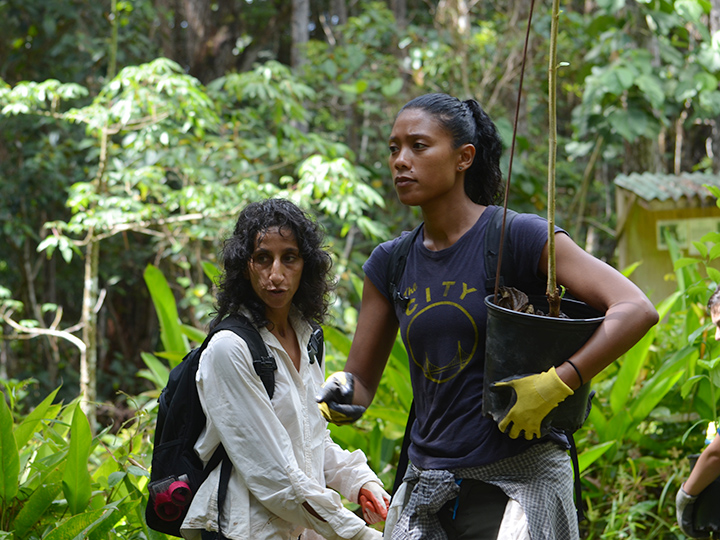
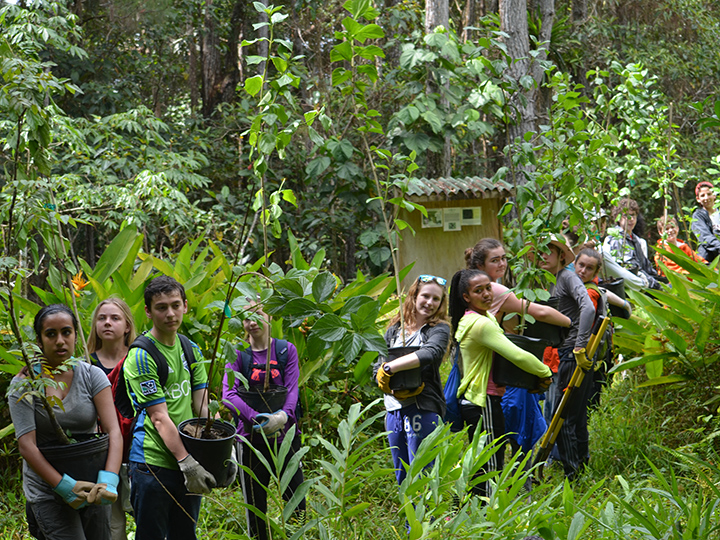
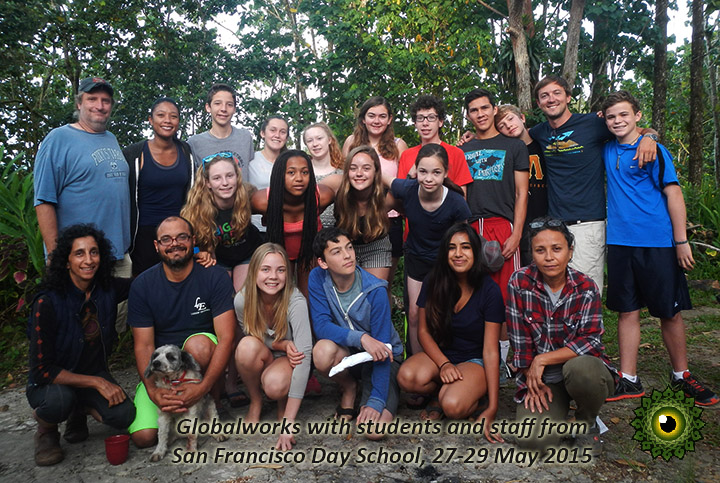

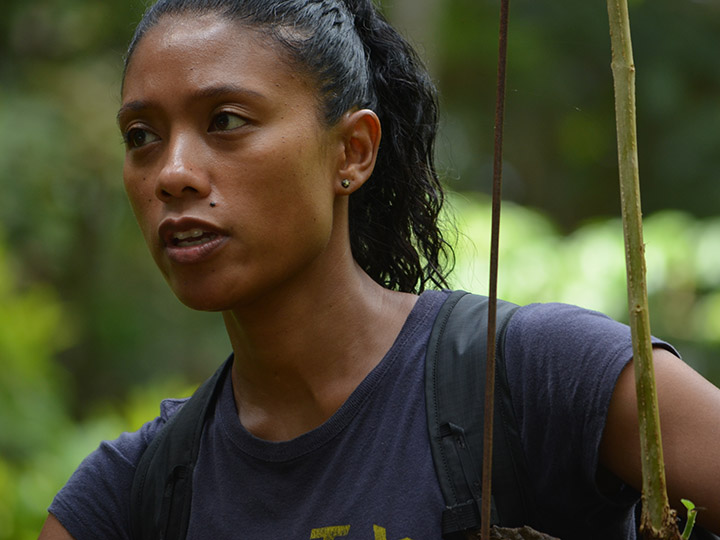

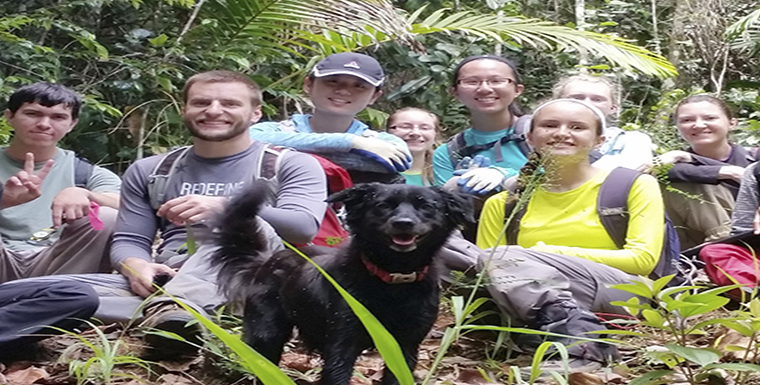
Earthwatch Team 4, July 2015. This team of teenage Earthwatchers spent time in the forest with 3t collecting seedlings, planting and monitoring endangered endemic tree species, and time with Norman in Hormiga Valley on herpetological surveys. Karen Babis,an Earthwatch volunteer in the past and her partner, Daniel Dioguardi spent time at the project and helped out in the field. Big thanks to Earthwatch Program Manager, Kyle Hutton, (third from left in image below), and Lena Cosentino for great teen team leadership.
Myriam Bourassa made this wonderful video (https://youtu.be/n1me_5p_CLc) of her time here.
Images by 3t Vakil, Karen Babis, Andres Rua, Lena Cosentino, and Daniel DioGuardi 2015

Thank you Earthwatchers for your help in herpetological surveys, planting of endangered endemic trees, Cornutia obovata and Styrax portoricensis, and for help in the nursery re-potting seedlings collected from the previous year.
Principal Investigators: Dr. Mark Nelson, 3t Vakil, Norman Greenhawk.
2015 Images by 3t Vakil, Lisa Bennet, and Susannah Garrett.
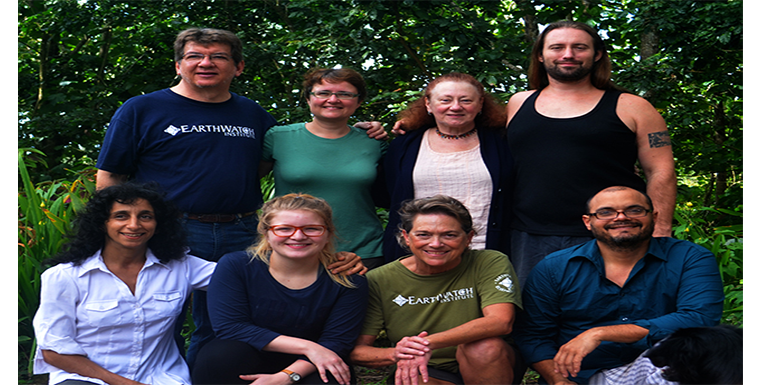
Back L-R: Stan Rullman Cindy Stieger, Margaret Baisley, PI Norman Greenhawk
Front L-R: PI 3t Vakil, Charlotte Field, Colleen Casey, Andrés Rúa
All pix on this page thanks to all above.
See Stan’s Blog about this trip!
https://earthwatchunlocked.wordpress.com/2015/04/30/from-trees-to-coquis-an-earthwatch-scientist-explores-puerto-ricos-rainforest/ 2015
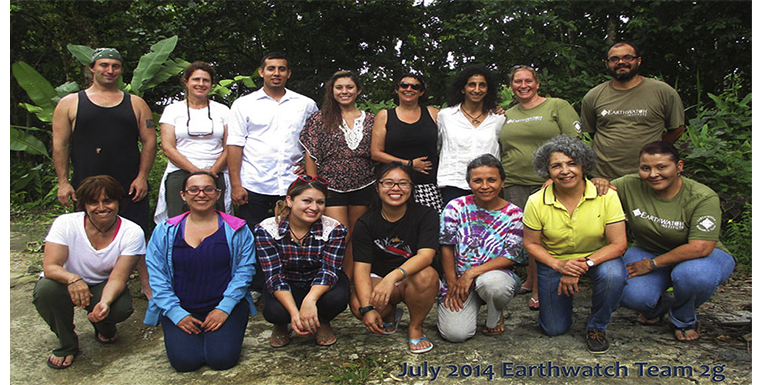
Thank you to all the Earthwatchers who fielded in our summer season. Through rain, mud, and slippery slopes, everyone made it over established comfort levels and discovered themselves anew at the end of each expedition. We are happy to have had Marta Edgar here as PI on the ongoing Bird Survey, and she worked with the first team. 3t continued on with tree data collection on the Liberation thinning study and also gathered, with team 2g, a complete monitoring of the endangered endemic tree species planted last year in a collaborative project with US Fish & Wildlife. Norman is carrying out a one month Herpetological survey in Icaco and Hormiga Valley and the teenagers on Team 3 along with their Earthwatch Facilitator, got to camp for 6 days and work on this study.
We really appreciate the level of enthusiasm brought to our project by volunteers, because without you, data would be hard to collect. We salute you all.
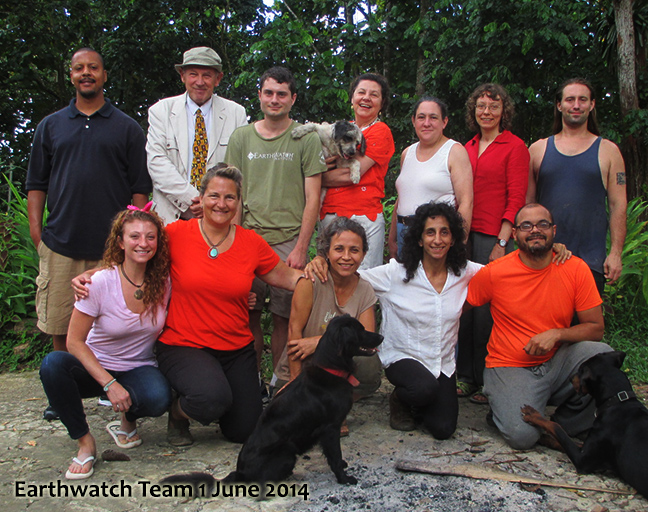
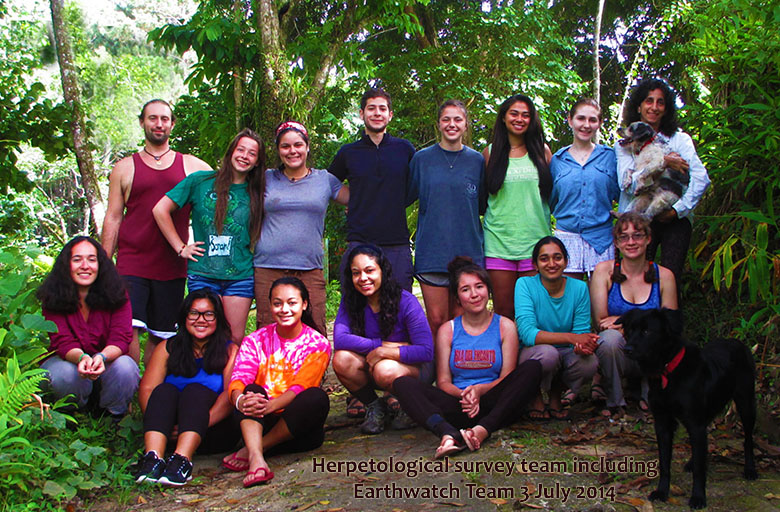
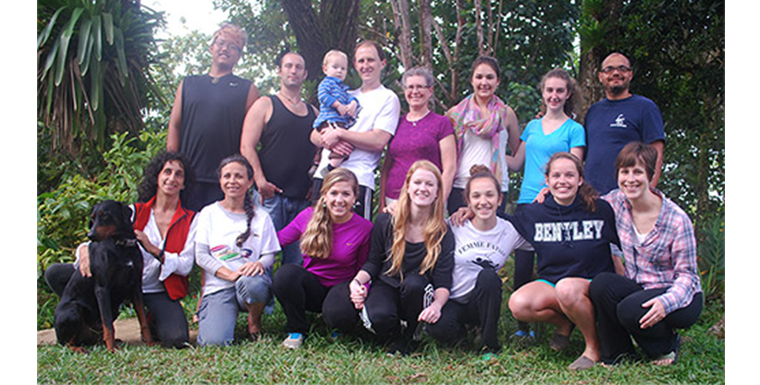
3t, Andrés, Norman and Magha appreciate the work and great company of Fryeburg students, February 2014
This wonderful team from Fryeburg Academy, worked with Andres and 3t to build the new nursery for the endangered endemic tree planting program. We have had a super time and we thank you all for help in clearing, pruning, tidying, and generally being a great clean-up crew on the homestead too! And in rainy conditions! The team also spent time with Norman on trail work, and carried out a frog study on a night-hike.
Thanks to Chris and Emily for bringing such a great team our way this year. We look forward to seeing Daniel at age three next year!
This program has been formulated to protect endangered flora and fauna by planting endangered endemic tree species, and working on habitat enhancement in subtropical wet forest. The location and the quality of the habitat of the 930-acre forest property of Las Casas de la Selva is ideal for the establishment of projects toward the recovery of various endangered endemic tree species. The property’s north-eastern border adjoins the Carite State Forest which contains another 6,660 acres of subtropical wet mountain forest land.
Tropic Ventures Research & Education Foundation are collaborating with US Fish and Wildlife Service (FWS) to develop habitat enhancement and restoration projects that benefit endangered endemic species of Puerto Rico
See images of this area being cleared by the last team from Vanderbilt University in December 2013.

Planting endangered endemicsWe have an enthusiastic team of Earthwatchers here till the 6th January 2014. Continuing our collaborative project with Fish & Wildlife, we planted critically endangered endemic tree saplings, Styrax portoricensis and Cornutia obovata. To date 116 Styrax and 21 Cornutia have been planted in our spectacular secondary forest here in the Mira Flores mountain, better known as Las Casas de la Selva.
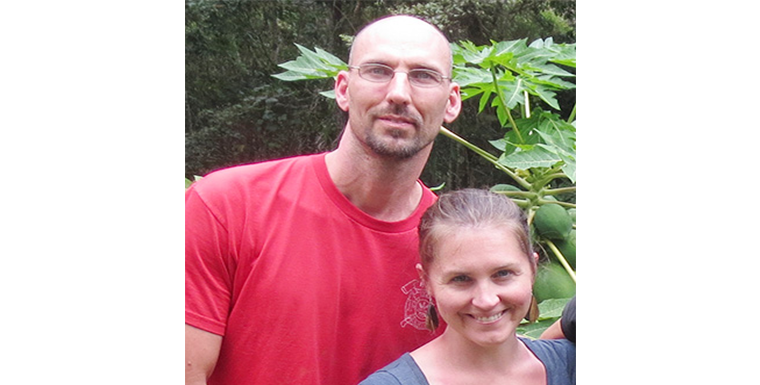
DJ and Niki Faller volunteered at Las Casas de la Selva in late February 2013. We carried endangered tree saplings (Styrax portoricensis) to various staging areas in the forest ready for planting.
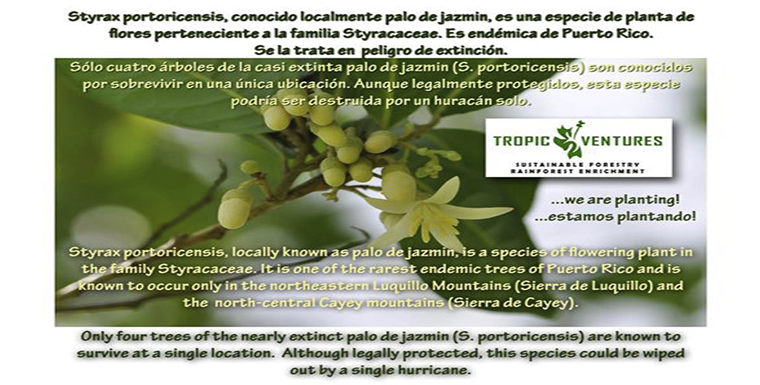
…Endangered Endemic Tree planting Program at Las Casas de la Selva. New Project 2013… Get in touch to get involved.
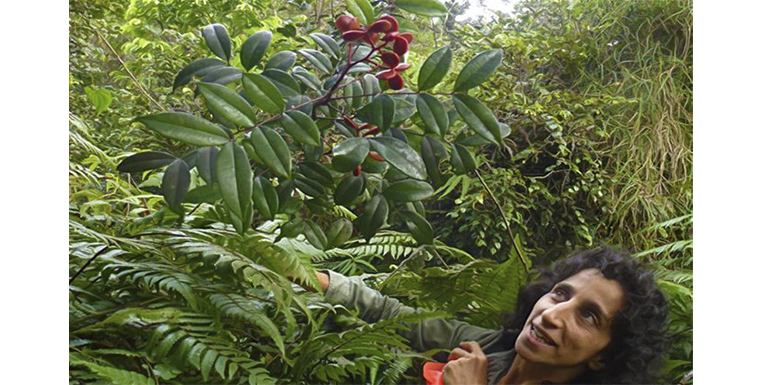
Rare Simarouba tulae in fruit in our forest…ravished by beauty all over again!
Simarouba tulae (flowers in July), Pic above by Marie Harding